#Eric had just as big of a role as he did in the comics so I guess I can’t blame them for that
Text
Adding Aaron to the list of characters that didn’t get their deserved screen time in the finale or a satisfying ending due to the sheer amount of characters and future spin-offs
#the walking dead#twd#Aaron#I don’t think the writers really care about the gays#their stories are always lacking#maybe they just don’t know how to write them#they didn’t know what to do with Tara her entire time until her last season but then they wasted it by killing her#Denise was well written I think but short lived#magna got literally so screwed over by the show#Yumiko had decent screen time for a side character introduced late in the series#but in terms of yumikos relationship with magna they really said fuck the gays#Eric had just as big of a role as he did in the comics so I guess I can’t blame them for that#I don’t want to even talk about how dirty they did Jesus#or Jesus/aaron
25 notes
·
View notes
Note
Do you think Garth not having any close bonds with any of the other titans screwed him over in terms of popularity? I think him and Donna should’ve been closer since of course Atlantis and Themscyria are similar in terms of both being greek and sharing gods not to mention he can just pop up at their island anytime if he wanted while you know…not actually stepping on it.
I think that they didn't figure out what they wanted Garth to be until the late 90s. They didn't even give him the name Garth until 10+ years into his existence. I feel like Aquaman himself was never that popular of a character beyond memes about the cartoon. Donna is also not super popular in the mainstream certainly not like Wonder Woman in any case. But she was the only female cast member of the titans for so long they had to keep her around. Or else Dick's only female friends would be his ex's (Kori and Babs) and Roy's his adopted mom (Dinah). Wally quit the team because he was The Flash and they didn't need him to be with a teen group. They needed him to grow up and hold a title on his own. Like Nightwing getting a Nightwing comic lead to a massive decrease in Titan relevancy. But Roy and Donna they don't have their own titles that were ever super big hits.
Garth on the other hand most people don't even know what he and Arthur had going on. They really could have had a drama series out of it like the Batman shows but they went goofy. But just think underwater royalty. Your father is your liege. He tried to kill you. I digress. The 90s comics also show that Aquaman is standoffish, rude, and doesn't play well with the heroes everyone likes better. In the 94 comic when he's rude to Kyle I wanted him to die a little bit. Garth is the underling to a generally unlikable character. And while the first Aquaman movie was pretty okay for a dcu movie... they did like all of it at once. But without Garth.
Dick becoming Nightwing and Jason being the robin who died is pretty much the best DC will promote as far as teenage sidekicks go.
So I think being an aquaman character hurt garth's popularity. i think them not capitalizing on the potential attractiveness of a sea 'prince' with purple eyes who can do magic hurt his popularity. i think not having garth in a teen titans comic tell someone about arthur's attempted murder hurt his popularity because everybody likes a horrific mentor mentee bond. Have Arthur in a JL comic awkwardly ask Bruce how you rebuild a bridge you exploded.
I think that tying down Garth with Tula so early into his run was boring. I think that Garth should have had some sort of Ariel and Eric romance. I'm not sure a connection to any of the titans would have helped per say. But I do think putting him in a supporting role to Nightwing to the Flash to other more popular characters would have boosted him by likability alone. There are a number of potential avenues they could have gone it to boost Garth's popularity one of which could have been not erasing him in the new 52 and putting some bland magician in his place and trying to exclude him from as many aquafam moments as possible
12 notes
·
View notes
Text
'Sixty years is but the blink of an eye for a time-traveller like The Doctor. But for a television series, a Diamond Anniversary is an extremely rare and impressive occurrence.
BBC’s Doctor Who recently celebrated such a milestone with three one-hour specials which, for the first time, streamed globally on Disney+.
Russell T Davies, fresh from his success on ’80s AIDS miniseries It’s A Sin, returned to the show he brought back so successfully in 2005 to the BBC. Bolstering his team are returning producers Julie Gardner and Phil Collinson, and Jane Tranter, the woman who was instrumental in bringing back Doctor Who in 2005. Bad Wolf, the company founded by Tranter and Gardner in 2015, currently produces the show with BBC Studios.
Another big returning name return was David Tennant, who played the 10th Doctor from 2005-2010 and who also returned for the show’s 50th Anniversary in 2013. Beloved by fans and audiences alike, Tennant’s Doctor was a big ratings draw.
Though, it’s not all returning past glories for Doctor Who. There is a new actor portraying the Time Lord, Ncuti Gatwa, who is taking over the titular role with the the forthcoming season 14, and who made his debut with the specials. The Rwandan-Scottish actor made a name for himself as gay teenager Eric Effiong in the Netflix comedy series Sex Education and recently starred as “Artist Ken” in Barbie. His first full season debut in the TARDIS will come in spring 2024, with a premiere date yet to be set.
Not only that, powerhouse streamer Disney+ is now on board to broadcast these new episodes across the world (with the exception of the U.K. and Ireland, where it still airs on BBC)...
What Happened in the 60th Anniversary Specials?
Showrunner Davies brought Tennant back with a cosmic bang and a galactic-sized nod to fan service with an adaptation of a Doctor Who Weekly comic strip first published in 1980.
The first of the three specials, “The Star Beast,” was a 60-minute romp that wonderfully evoked the Tenth Doctor-era, complete with cutesy alien The Meep (think The Mandalorian’s Baby Yoda, but bigger and hairier) and the return of much-loved companion, Donna Noble (played by Catherine Tate, The Office).
Last seen in the Tenth Doctor’s finale in 2010, Donna’s return posed a fatal conundrum for the Doctor: If she remembered her past with the Doctor, she would die. Thankfully, writer Davies had a workaround, meaning that the 60th anniversary celebrations did not result in the death of a companion but, in fact, allowed Donna to live unharmed and enjoy some further adventures in time and space with her best friend.
The main question, though, was just why the Fourteenth Doctor, played by Tennant, had the same face and body of the Tenth Doctor, also played by Tennant. This was an unprecedented move in the history, or Whostory, of the show. Special number two, “Wild Blue Yonder,” traveled to the end of the universe and delved into the uncanny, but still posed the query as to why that particular face returned. (It’s a good face, we weren’t complaining).
Fans would have to wait until the third and final special, “The Giggle,” before the mystery was finally revealed. And it was all down to Donna. She surmised that he changed his face and then found her to “come home.” The Doctor commented, “I’ve never been so happy in my life,” as he sat with the Noble family, not fighting aliens and enjoying a spot of lunch.
The Final Special Had More Up Its Intergalactic Sleeve
Aside from the return of fan favorite Kate Stewart (Jemma Redgrave) and ’80s-era companion Melanie Bush (Bonnie Langford), there was an even bigger returnee waiting in the wings.
Making an all-singing, all-dancing return to Doctor Who was the formidable villain, The Toymaker. Played by Neil Patrick Harris (best known for portraying Barney Stinson on the CBS series, How I Met Your Mother), the Toymaker made his debut opposite the First Doctor (William Hartnell) in the 1966 four-part serial, “The Celestial Toymaker.”
The character was originally played by English actor Michael Gough, who would go on to play Bruce Wayne’s butler Alfred in the four Batman films directed by Tim Burton and Joel Schumacher. Though, it’s hard to picture Gough pulling off NPH’s manic routine to The Spice Girls’ 1997 hit, “Spice Up Your Life”.
And then there was the first appearance of the new Doctor, Gatwa. But this was no simple regeneration, as seen in Doctor Who so many times previously. Just as the return of a previous actor to play a new regeneration of the Doctor was unprecedented, Davies debuted another new element in the show’s mythology: “bigeneration.” This left fans shocked as the Fourteenth Doctor, seemingly regenerating as per usual, actually split into two, revealing Gatwa’s Fifteenth Doctor and Tennant’s Fourteenth Doctor standing, looking at one another just as surprised as the millions of Whovians watching across the globe.
What is Bigeneration and What Does it Mean for the Future?
As is explained in the behind-the-scenes show Doctor Who Unleashed, “instead of a new body taking over from the old body, the new body separates from the old body, and both are left alive.”
This means that there are two distinct Doctors roaming the universe at the same time. While it might take some time for Tennant’s Fourteenth Doctor to pick up the keys to his TARDIS and start planet-hopping, as he seems quite happy to kick back in England for a while, it’s possible — nay, highly likely — that the Gatwa and Tennant Doctors will meet again.
For the time being, though, Davies has stated that there are “no plans” for a Fourteenth Doctor return, adding that he’s “parked” on Earth with Donna Noble for a “happy life.”
Interestingly, Davies has also suggested that this has even bigger implications for Doctor Who. This bigeneration has created a new timeline where all previous incarnations have been affected, with every Doctor continuing to exist after their own regeneration. Davies may be joking when he refers to this as a “Doctorverse,” but he has established “The Whoniverse” (bringing in previous spinoffs such as Torchwood and The Sarah Jane Adventures) so it’s not out of the realm of possibility that audiences could witness various team-ups featuring Gatwa with previous Doctors at any moment. Or, perhaps more spinoff series could be on the way featuring the past Doctors on their own...'
#Doctor Who#Russell T. Davies#David Tennant#Catherine Tate#Donna Noble#Ncuti Gatwa#Bonnie Langford#Melanie Bush#The Toymaker#Neil Patrick Harris#Kate Stewart#Jemma Redgrave#60th Anniversary#The Star Beast#Wild Blue Yonder#The Giggle#Bi-generation#Julie Gardner#Jane Tranter#Phil Collinson#BBC One#Disney+#Doctor Who: Unleashed#Eric Effiong#Sex Education#Bad Wolf#It's A Sin#TARDIS#Barbie#The Day of the Doctor
18 notes
·
View notes
Text

______________________________________________________________
name: Henrik Andrew White
age: 29
occupation: tutor
sexuality: straight
status: single
current location: usa
shipping status: open
Henrik is the first born son of twins. He’s four minutes older than his brother Alec. He grew up along with his family in Brighton, England. the relationship to his parents had always been good. While his mother was always there for them, giving them love and support, his father had trouble showing love, and being there for his kids. After his father had lost his job, his problem with alcohol got worse and so did his issueS with anger. Eric White had always been a rather harsh father, very strict when it came to rules and those the boys broke or went against. Henrik may never had been the toughest one but he was playing the big or older brother role well. He was looking out for Alec wherever he could. It started rather quickly that he was not only abusive towards their mother but also his sons. And whenever Alec had been a upsetting his father again, Henrik stepped between them. He knew Alec looked up to him but he never saw it as a big deal. He just did what seemed right, what had to be done. Henrik wanted to protect at least him if he couldn’t protect their mother. That’s how he got different bruises on his body from all the things his father did to him. The baddest one he got right on his chest where his father once slid him to prove he had the power over him. Henrik never wasted a thought of how dangerous this actually was for him or what might could've happened. All he wanted was to protect his brother. He knew that’s what heroes did, at least those in the comics he read. Nevertheless, he never admitted that he was actually very afraid of their father. A couple years later, the boys had just turned eight, Eric lost his life in a car accident due to drunken driving. While it had been a shock at first, the small family was able to finally feel free. There was no fear anymore. Finally, they were able to live.
As older as they got, Henrik decided to focus more on school. He stayed home, studying and making sure he put all his time into his education. He always enjoyed the thought of maybe becoming a teacher or even better a professor one day. And his mother always supported him on that. After his brother got in trouble nearly every day and his mother made the decision to send him off to America, Henrik decided to go with him. He knew he couldn’t leave his brother alone and that he needed to have an eye on him. After all, he wanted to protect him even if Alec turned out to be much stronger than him now. And separating twins had never been a good decision. Instead of accepting to study at Cambridge, he started off fresh in America. His school days had never been easy. Alec had been the populrar twin of the two, also the more attractive one. It seemed ridiculous to him, they both look exactly the same and still, people made fun of him.
College brought the two boys back together. Meeting up every week for pizza to chat, Henrik supported Alec within his whole change. While his brother started focusing on his music career, Henrik found his true passion in archaeology. And college showed him there were people who liked him for who he was. The once so shy and reserved boy turned out to be very adventureous. He started going to the gym, boxing becominga passion of him too. Henrik replaced his glasses with contacts, cut his hair and started wearing it losely wihtout trying to hold his curls back. Later on, he becomes one of the youngest professors that ever taught at a university.
0 notes
Text
Ryan Coogler’s statement on Chadwick Boseman’s death has gutted me again. “He’s an ancestor now.”
Before sharing my thoughts on the passing of the great Chadwick Boseman, I first offer my condolences to his family who meant so very much to him. To his wife, Simone, especially.
I inherited Marvel and the Russo Brothers’ casting choice of T’Challa. It is something that I will forever be grateful for. The first time I saw Chad’s performance as T’Challa, it was in an unfinished cut of “Captain America: Civil War.” I was deciding whether or not directing “Black Panther” was the right choice for me. I’ll never forget, sitting in an editorial suite on the Disney Lot and watching his scenes. His first with Scarlett Johansson as Black Widow, then, with the South African cinema titan, John Kani as T’Challa’s father, King T’Chaka. It was at that moment I knew I wanted to make this movie. After Scarlett’s character leaves them, Chad and John began conversing in a language I had never heard before. It sounded familiar, full of the same clicks and smacks that young black children would make in the States. The same clicks that we would often be chided for being disrespectful or improper. But, it had a musicality to it that felt ancient, powerful, and African.
I learned later that there was much conversation over how T’Challa would sound in the film. The decision to have Xhosa be the official language of Wakanda was solidified by Chad, a native of South Carolina, because he was able to learn his lines in Xhosa, there on the spot. He also advocated for his character to speak with an African accent, so that he could present T’Challa to audiences as an African king, whose dialect had not been conquered by the West.
I finally met Chad in person in early 2016, once I signed onto the film. He snuck past journalists that were congregated for a press junket I was doing for CREED, and met with me in the green room. We talked about our lives, my time playing football in college, and his time at Howard studying to be a director, about our collective vision for T’Challa and Wakanda. We spoke about the irony of how his former Howard classmate Ta-Nehisi Coates was writing T’Challa’s current arc with Marvel Comics. And how Chad knew Howard student Prince Jones, who’s murder by a police officer inspired Coates’ memoir Between The World and Me.
I noticed then that Chad was an anomaly. He was calm. Assured. Constantly studying. But also kind, comforting, had the warmest laugh in the world, and eyes that seen much beyond his years, but could still sparkle like a child seeing something for the first time.
That was the first of many conversations. He was a special person. We would often speak about heritage and what it means to be African. When preparing for the film, he would ponder every decision, every choice, not just for how it would reflect on himself, but how those choices could reverberate. “They not ready for this, what we are doing…” “This is Star Wars, this is Lord of the Rings, but for us… and bigger!” He would say this to me while we were struggling to finish a dramatic scene, stretching into double overtime. Or while he was covered in body paint, doing his own stunts. Or crashing into frigid water, and foam landing pads. I would nod and smile, but I didn’t believe him. I had no idea if the film would work. I wasn’t sure I knew what I was doing. But I look back and realize that Chad knew something we all didn’t. He was playing the long game. All while putting in the work. And work he did.
He would come to auditions for supporting roles, which is not common for lead actors in big budget movies. He was there for several M’Baku auditions. In Winston Duke’s, he turned a chemistry read into a wrestling match. Winston broke his bracelet. In Letitia Wright’s audition for Shuri, she pierced his royal poise with her signature humor, and would bring about a smile to T’Challa’s face that was 100% Chad.
While filming the movie, we would meet at the office or at my rental home in Atlanta, to discuss lines and different ways to add depth to each scene. We talked costumes, military practices. He said to me “Wakandans have to dance during the coronations. If they just stand there with spears, what separates them from Romans?” In early drafts of the script. Eric Killmonger’s character would ask T’Challa to be buried in Wakanda. Chad challenged that and asked, what if Killmonger asked to be buried somewhere else?
Chad deeply valued his privacy, and I wasn’t privy to the details of his illness. After his family released their statement, I realized that he was living with his illness the entire time I knew him. Because he was a caretaker, a leader, and a man of faith, dignity and pride, he shielded his collaborators from his suffering. He lived a beautiful life. And he made great art. Day after day, year after year. That was who he was. He was an epic firework display. I will tell stories about being there for some of the brilliant sparks till the end of my days. What an incredible mark he’s left for us.
I haven’t grieved a loss this acute before. I spent the last year preparing, imagining and writing words for him to say, that we weren’t destined to see. It leaves me broken knowing that I won’t be able to watch another close-up of him in the monitor again or walk up to him and ask for another take.
It hurts more to know that we can’t have another conversation, or facetime, or text message exchange. He would send vegetarian recipes and eating regimens for my family and me to follow during the pandemic. He would check in on me and my loved ones, even as he dealt with the scourge of cancer.
In African cultures we often refer to loved ones that have passed on as ancestors. Sometimes you are genetically related. Sometimes you are not. I had the privilege of directing scenes of Chad’s character, T’Challa, communicating with the ancestors of Wakanda. We were in Atlanta, in an abandoned warehouse, with bluescreens, and massive movie lights, but Chad’s performance made it feel real. I think it was because from the time that I met him, the ancestors spoke through him. It’s no secret to me now how he was able to skillfully portray some of our most notable ones. I had no doubt that he would live on and continue to bless us with more. But it is with a heavy heart and a sense of deep gratitude to have ever been in his presence, that I have to reckon with the fact that Chad is an ancestor now. And I know that he will watch over us, until we meet again."
#ryan coogler#chadwick bosemen#black panther#marvel#t’Challa#creed#m’baku#winston duke#shuri#letitia wright#xhosa#john kani#prince jones#ta nehisi coates
3K notes
·
View notes
Link
“I inherited Marvel and the Russo Brothers’ casting choice of T’Challa. It is something that I will forever be grateful for. The first time I saw Chad’s performance as T’Challa, it was in an unfinished cut of CAPTAIN AMERICA: CIVIL WAR. I was deciding whether or not directing BLACK PANTHER was the right choice for me. I’ll never forget, sitting in an editorial suite on the Disney Lot and watching his scenes. His first with Scarlett Johansson as Black Widow, then, with the South African cinema titan, John Kani as T’Challa’s father, King T’Chaka. It was at that moment I knew I wanted to make this movie. After Scarlett’s character leaves them, Chad and John began conversing in a language I had never heard before. It sounded familiar, full of the same clicks and smacks that young black children would make in the States. The same clicks that we would often be chided for being disrespectful or improper. But, it had a musicality to it that felt ancient, powerful, and African.
In my meeting after watching the film, I asked Nate Moore, one of the producers of the film, about the language. “Did you guys make it up?” Nate replied, “that’s Xhosa, John Kani’s native language. He and Chad decided to do the scene like that on set, and we rolled with it.” I thought to myself. “He just learned lines in another language, that day?” I couldn’t conceive how difficult that must have been, and even though I hadn’t met Chad, I was already in awe of his capacity as actor.
I learned later that there was much conversation over how T’Challa would sound in the film. The decision to have Xhosa be the official language of Wakanda was solidified by Chad, a native of South Carolina, because he was able to learn his lines in Xhosa, there on the spot. He also advocated for his character to speak with an African accent, so that he could present T’Challa to audiences as an African king, whose dialect had not been conquered by the West.
I finally met Chad in person in early 2016, once I signed onto the film. He snuck past journalists that were congregated for a press junket I was doing for CREED, and met with me in the green room. We talked about our lives, my time playing football in college, and his time at Howard studying to be a director, about our collective vision for T’Challa and Wakanda. We spoke about the irony of how his former Howard classmate Ta-Nehisi Coates was writing T’Challa’s current arc with Marvel Comics. And how Chad knew Howard student Prince Jones, who’s murder by a police officer inspired Coates’ memoir Between The World and Me.
I noticed then that Chad was an anomaly. He was calm. Assured. Constantly studying. But also kind, comforting, had the warmest laugh in the world, and eyes that seen much beyond his years, but could still sparkle like a child seeing something for the first time.
That was the first of many conversations. He was a special person. We would often speak about heritage and what it means to be African. When preparing for the film, he would ponder every decision, every choice, not just for how it would reflect on himself, but how those choices could reverberate. “They not ready for this, what we are doing…” “This is Star Wars, this is Lord of the Rings, but for us… and bigger!” He would say this to me while we were struggling to finish a dramatic scene, stretching into double overtime. Or while he was covered in body paint, doing his own stunts. Or crashing into frigid water, and foam landing pads. I would nod and smile, but I didn’t believe him. I had no idea if the film would work. I wasn’t sure I knew what I was doing. But I look back and realize that Chad knew something we all didn’t. He was playing the long game. All while putting in the work. And work he did.
He would come to auditions for supporting roles, which is not common for lead actors in big budget movies. He was there for several M’Baku auditions. In Winston Duke’s, he turned a chemistry read into a wrestling match. Winston broke his bracelet. In Letitia Wright’s audition for Shuri, she pierced his royal poise with her signature humor, and would bring about a smile to T’Challa’s face that was 100% Chad.
While filming the movie, we would meet at the office or at my rental home in Atlanta, to discuss lines and different ways to add depth to each scene. We talked costumes, military practices. He said to me “Wakandans have to dance during the coronations. If they just stand there with spears, what separates them from Romans?” In early drafts of the script. Eric Killmonger’s character would ask T’Challa to be buried in Wakanda. Chad challenged that and asked, what if Killmonger asked to be buried somewhere else?
Chad deeply valued his privacy, and I wasn’t privy to the details of his illness. After his family released their statement, I realized that he was living with his illness the entire time I knew him. Because he was a caretaker, a leader, and a man of faith, dignity and pride, he shielded his collaborators from his suffering. He lived a beautiful life. And he made great art. Day after day, year after year. That was who he was. He was an epic firework display. I will tell stories about being there for some of the brilliant sparks till the end of my days. What an incredible mark he’s left for us.
I haven’t grieved a loss this acute before. I spent the last year preparing, imagining and writing words for him to say, that we weren’t destined to see. It leaves me broken knowing that I won’t be able to watch another close-up of him in the monitor again or walk up to him and ask for another take.
It hurts more to know that we can’t have another conversation, or facetime, or text message exchange. He would send vegetarian recipes and eating regimens for my family and me to follow during the pandemic. He would check in on me and my loved ones, even as he dealt with the scourge of cancer.
In African cultures we often refer to loved ones that have passed on as ancestors. Sometimes you are genetically related. Sometimes you are not. I had the privilege of directing scenes of Chad’s character, T’Challa, communicating with the ancestors of Wakanda. We were in Atlanta, in an abandoned warehouse, with bluescreens, and massive movie lights, but Chad’s performance made it feel real. I think it was because from the time that I met him, the ancestors spoke through him. It’s no secret to me now how he was able to skillfully portray some of our most notable ones. I had no doubt that he would live on and continue to bless us with more. But it is with a heavy heart and a sense of deep gratitude to have ever been in his presence, that I have to reckon with the fact that Chad is an ancestor now. And I know that he will watch over us, until we meet again.”
#chadwick boseman#ryan coogler#and now I'm crying all over again#the impact that man had#and still has#going by the massive amount of love I see all over my social media#a tribute for a king
2K notes
·
View notes
Text
What The Boys Season 2 Already Revealed About Jensen Ackles' Soldier Boy
Spoilers ahead for the Season 2 premiere of The Boys on Amazon Prime.
https://www.cinemablend.com/television/2554064/what-the-boys-season-2-already-revealed-about-jensen-ackles-soldier-boy

The Boys is finally back in action with new episodes, and it's already clear that the show didn't lose any of its edge over hiatus. To Hughie and the rest of the titular "Boys," Vought and the Supes are still the big bads who need to be stopped, but the premiere proved that Homelander is in trouble with Vought as well. Vought CEO Stan Edgar wasn't happy with Homelander going rogue and the reveal of Compound V to the world, and the result was a lecture that delivered The Boys' first mention of Jensen Ackles' Soldier Boy.
Supernatural star Jensen Ackles had announced The Boys as his next big project following the end of his long-running CW series, and the move will reunite him with Supernatural creator Eric Kripke. Soldier Boy is a character from The Boys comics, but there were also multiple characters who went by that name, and a version of Soldier Boy had been around since World War II. Thanks to the first episode of Season 2, we have confirmation of what Kripke hinted when Ackles' casting was announced. Here's how it went down.
When Stan Edgar sat Homelander down for a lecture in his office, he told the Supe that Vought isn't a superhero company as much as a pharmaceutical company, and he brought Homelander in on the real history of founder Frederick Vought:
“ Got his doctorate from Munich. Ahead of his time in genetics. Such the rising young star that in ’39, Hitler appointed him chief physician at Dachau, where he enjoyed a ready supply of human subjects on which to test his earliest iterations of Compound V. Which we condemn in the strongest of possible terms. Early in ’44, he felt the winds change. Got spirited away to the Allies. When Oppenheimer was flailing with the bomb, Dr. Vought already had practical applications of Compound V tested in the field. Heroes like Soldier Boy killing Germans by the dozen. So Roosevelt pardoned him and he became as wonder bread American as Disney and Edison.”
According to Stan Edgar in The Boys Season 2, Soldier Boy was turned into the first Supe for the Allies during World War II, and he was "killing Germans by the dozen." These comments back up Eric Kripke's statement that Jensen Ackles' Soldier Boy will be "the very first Superhero" who brings "humor, pathos, and danger." Like how Homelander and Queen Maeve are clear takes on Superman and Wonder Woman, Soldier Boy is a Boys take on Captain America.
The confirmation that Jensen Ackles will play the Soldier Boy who was created in the 1940s raises some big questions about his role in Season 3. Did the early Compound V grant him the ability to never age, allowing him to join the action in the present? Or will he appear in flashbacks? Or is there some twist that fans can't even imagine until the end of Season 2 or beginning of Season 3?
Personally, I'm wondering if he'll have ties to Stormfront. In the comics, Stormfront is the first successful Compound V recipient, but for the Nazis rather than the Allies. The show has turned Stormfront into (seemingly, at least) a young woman, and it's looking like Soldier Boy might have gotten part of the Stormfront backstory. That said, it's possible that Soldier Boy and Stormfront are somehow going to be set as opposite sides of the same Supe coin, created around the same time to fight for opposite sides.
Aya Cash could always play a descendant of the first Nazi Stormfront, if not the same Stormfront from World War II. And hey, while I'm speculating, why not cast Jeffrey Dean Morgan in a story involving Soldier Boy somehow? Another Supernatural reunion would be fun, and Eric Kripke himself floated the idea of Morgan joining The Boys Season 3 earlier this year.
In all seriousness, The Boys could go in a wildly different direction with Soldier Boy than fans can possibly predict at this point, as well as with Stormfront. The show already took liberties in Season 2 by gender-flipping Stormfront, and Season 2 has only just begun. Personally, I'm hoping for some more information on Soldier Boy in the coming episodes, even if a cameo from Jensen Ackles doesn't happen. Eric Kripke did promise a "Jensen you've never seen before" in Season 3, and that's saying something for a guy whose previous show ran for 300+ episodes!
Jensen Ackles seems pretty excited about joining the show, based on his announcement that he would be playing Soldier Boy:
View this post on Instagram
A post shared by Jensen Ackles (@jensenackles) on Aug 17, 2020 at 9:04am PDT
Short of The Boys delivering a cameo of Jensen Ackles' Soldier Boy in Season 2, fans will presumably have to wait until Season 3 to see him in action. Fans will be able to see Ackles on the small screen sooner, however, thanks to the final episodes of Supernatural that will hit the airwaves starting in October. The final two episodes are in production now.
As for The Boys, you can find new episodes of Season 2 releasing on Amazon. While Season 1 released all eight episodes at once a la Netflix, Amazon is doing things differently for Season 2. The first three episodes released on Friday, September 4, and one episode will continue to release weekly. The finale will be available October 9, 2020.
The early renewal for Season 3 and news of Jensen Ackles' casting may come as some relief to fans come October 10, when the wait for new episodes begins again. The entertainment industry is still slowly opening up after the shutdowns this spring, so it's possible that production won't be able to begin in earnest for a while.
332 notes
·
View notes
Text
When did Storm Shadow Become a Villain?
There is a scene in GI Joe Resolute where Snake Eyes and Storm Shadow are having their obligatory Ninja Battle and (Spoilers I Guess) Storm Shadow reveals that he orchestrated his uncle, The Hard Master’s, death and that he fully meant to kill Snake Eyes as well, out of jealousy and because his uncle would not teach him the final secret to killing a man in seven steps, fearing that young Storm Shadow was too volatile and violent. Towards the end of the battle Storm Shadows wrist bands come off, revealing his Arashikage tattoo on one arm and a Cobra Sigil on the other.
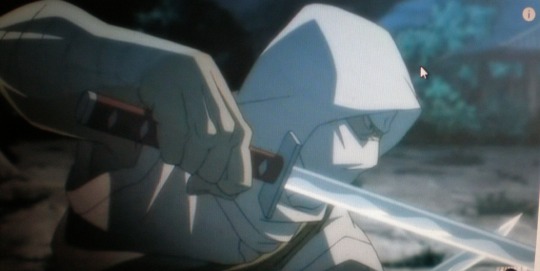
This version of Storm Shadow (Voiced by “every Beagle Boy on Ducktales” Eric Bauza) stands out amongst his post-2000 incarnations as an unrepentant psychopath, but still falls in line with the prominent view of Storm Shadow as a villain--one of the main villains with a special hatred for his GI Joe counterpart.
This is the version I grew up with. GI Joe vs Cobra through Sigma 6 were the prominent Joe adaptations when I was the target demographic and all throughout Storm Shadow was a bad guy to varying degrees.
I knew in the classic Hama stuff he eventually defected, but I was not prepared for just how much he’s a heroic character from the start. There’s no big sword dual with Snake Eyes, no Anakin and Obi Wan style “friend turned bitter enemy” dynamic. It’s made clear from jump that Tommy is undercover in Cobra and remains an honorable man in search of justice. He leaves Cobra quickly and is branded as a Joe in all his figures until 2000--when they started packing their characters in two-packs with one Joe and one Cobra. In all appearances, Storm Shadow is more a Joe than a Cobra. So what led to the the modern view of Storm Shadow as a bad guy, who, even when he gets his redemption, still has a mean streak and a cruel manner? How did a character in a toy driven franchise who had more toys as a hero than a villain end up as one of the franchise’s most consistent villains?
*(For simplicity’s sake, this is only going to cover film and television portrayals of the character).
*Spoilers for pretty much every GI Joe adaptation to follow.
The first portrayal of Storm Shadow as Cobra Commander’s loyal and competent hatchet man (one of the few) is not too much older than Hama’s original Marvel version. The Sunbow version of Storm Shadow (voiced by “guy you’ve heard in everything” Keone Young) remained a loyal cobra agent--with none of the Hama version’s depth.

He had what you might call “standard cartoon Ninja honor” where he clearly had some kind of code of ethics, but was primarily an arrogant killer (as much as he could be in a cartoon) who fought primarily with Spirit and Quick Kick (voiced by wonderfully talented “guy you’ve seen in everything” Francois Chau) as Snake Eyes was largely shunted to the side in the cartoon. The echoes of Sunbow Storm Shadow can be seen in pretty much every non-comic adaptation that followed.
Skipping right over the Dic continuation of the Sunbow cartoon because Storm Shadow actually is a Joe in that, as he was in the comics and figures of the time (and because I haven’t seen it) we come to the 2000′s era.

The Spy Troops and Valor vs. Venom DTV movies had a Storm Shadow (voiced by “guy who got his blood ripped out by Magneto in X2: X-Men United” Ty Olsson) who was essentially his Sunbow self with one major change. He actually had a history with Snake Eyes, and a bitter rivalry. The details are not gone into in either film (you get a little more in the figure file cards and mini-comics of the era) but Storm Shadow accuses Snake Eyes of betraying the Arashikage. The implication being that either Storm Shadow blames Snake Eyes for some crime or another or that there was a schism in clan.
The File cards of the time movie go from acknowledging Storm Shadow’s time as a Joe, and claiming he’s working with Cobra again for unknown reasons, to establishing their own canon that Snake Eyes and Storm Shadow were once best friends and “Sword Brothers” before Storm Shadow fell to the dark side and joined Cobra. Though Storm Shadow’s file card does end with the ominous implication that he’s got his own agenda in working with Cobra (just like his Hama incarnation) the DTV films imply that he’s a Cobra loyalist in addition to his feud with Snake Eyes.
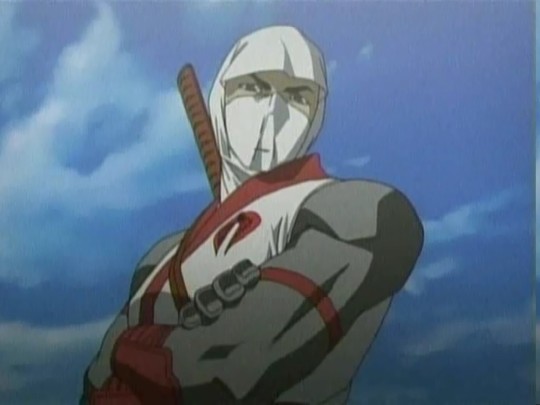
Spy Troops and Valor vs. Venom lead in a semi-canonical way to GI Joe Sigma 6 where Storm Shadow (voiced by “guy whose only other role I recognize is pulling double duty as Zeke Stane and Living Laser in the Iron Man 3 videogame” Tom Wayland) more or less continues the previous two iterations’ version of Storm Shadow. He once again accuses Snake Eyes of some great betrayal that broke their friendship. The GI Joe website at the time includes the detail that Storm Shadow was infiltrating Cobra when he was brainwashed into becoming a loyal Cobra agent. It’s another concession, like his 2001 file card, to Hama’s heroic double agent, while still portraying him in line with Sunbow’s villainous henchman.
GI Joe Resolute comes next, where we see a departure from any pretense of Storm Shadow being a good guy. Resolute, in many ways, comes off as a gritty direct continuation of the Sunbow series, and it takes Sunbow’s villainous Storm Shadow and strips him of even the token bits of honor and humanity he had. It also, as near as I can tell, begins the trend of Storm Shadow outright resenting Snake Eyes, rather than being his one time friend.

As an irrelevant aside, I have my problems with Resolute but I do love everyone’s character designs and Eric Bauza does a fantastic job as one fourth of the cast. His Sean Connery impression for Destro is particularly inspired.
This brings us to the big ones. GI Joe: RIse of Cobra and GI Joe: Retaliation where Storm Shadow is brought to the big screen by Lee Byung-Hun (who I don’t have a snarky/informative aside for because shamefully despite how prolific he is I’ve only seen him in these movies and The Magnificent 7 remake) and as a child by Brandon Soo Hoo (he’s also been in a lot of stuff, but I particularly liked his turn as Beast Boy in the animated New 52 DC movies).

Lee’s Storm Shadow in the first film falls in line with his portrayals up to this point, probably skewing most closely towards Sunbow. He has a code of ethics (he doesn’t kill women apparently) but he’s still a bad guy and he seems to quite like it. Lee brings a charm to the character that had not really existed up until that point. He also spends a lot of time maskless (and it’s hard to blame the production team for that one, he’s a very handsome dude) which was a shock for anyone who grew up with the 2001 era storm shadow where the thought of him without a mask was so insane that it was relegated to a mail in figure (As a kid I seriously thought he had some Mandalorian style code of not removing it)
His origin in this version takes bits of Hama and bits of Resolute (or Resolute took from this, Resolute came out first but this might have been in development). It is, as far as I can tell, the first version to have Storm Shadow and Snake Eyes train together as children and it portrays Storm Shadow, even as a child, as an arrogant and jealous person.
Now, at least in my opinion, it’s fairly obvious that the first movie fully intended Storm Shadow to be a baddie, full stop. There’s a little wiggle room given that we never see him stab The Hard Master in the flashback (the Hard Master in this version is Storm Shadow’s father rather than his uncle) but the way he taunts Snake Eyes about it during their final confrontation makes a pretty compelling case for his having committed patricide.
The sequel would bring back elements of the Hama backstory. Zartan killed The Hard Master and Storm Shadow had to infiltrate Cobra to discover that. Given Cobra Commander and Storm Shadow are of roughly the same age (Storm Shadow being a bit older I think) and this event occurred when they were both children it’s unclear on who’s orders Zartan did this but we do know it was done to turn the already volatile young man into the perfect angry ninja assassin (given this canon is pretty much over we’ll probably never know for sure, but my guess based on the IDW movie universe comics is that Zartan either did it at the behest of the Red Ninja Clan or just to have a tiny assassin of his own, probably the former since they seem to regard each other as unpleasant colleagues who sometimes work together).
What I particularly like about this version is that, because the first movie portrayed him as this charmingly sadistic Bond Villain henchman, even after he switches sides in the sequel he’s still kind of a belligerent dick. It’s a fun piece of characterization that even once he’s cleared his name, avenged his father, and made his peace with his family, it doesn’t change the fundamental fact that he’s not a very nice person.
This is something that would persist into the next (and for the moment last, but more on that later) onscreen version of Storm Shadow.

GI Joe Renegades (the best GI Joe Cartoon, fight me) saw Storm Shadow (voiced by “holy crap this guy originated the role of Saw Gerrera in Clone Wars” Andrew Kishino) as the leader of the Arashikage Clan (explicitly a crime syndicate, harkening back to implications in Hama’s version) who operates independent of Cobra except very briefly and only to fulfill his own ends (again bringing him closer to Hama’s version than any of his predecessors). Falling in line with the implications of the movie and Resolute, he and Snake Eyes were uneasy classmates more than friends and trained together as teenagers. An attempt to kill Snake Eyes went awry and resulted in the death of the Hard Master (who again, seemed to favor Snake Eyes over his own nephew). Storm Shadow believes Snake Eyes to have killed The Hard Master(somehow failing to connect the dots given his own murder plan failed the same night Snake Eyes allegedly murdered his uncle--or hell he’s probably just in denial until the truth slaps him in the face).
Also, irrelevant aside number 2, in contrast with Resolute I really don’t like this character design. Renegades had pretty good character design all around, neatly bringing together various versions in a way that felt coherent but I don’t like the little tufts of hair sticking out of the mask or the way it kinda hangs in front of his mouth. Is he hiding his face or not? It seems like he’s not so much wearing a mask as a bandana and an oversized turtleneck.
This version neatly ties together the “Snake Eyes betrayed us” of the early 2000′s, the “arrogant unfavorite” of the mid 2000s and the “out for justice assassin” of Hama’s run. He is, again, an arrogant prick from the start, but his genuine shame and resolve to abandon his quest for vengeance and his extremely short partnership with Cobra make his eventual redemption (or the start of what you assume would have been a longer redemption arc had the series continued) more believable than the live action movies--if a mite less fun.
And that’s where it ends, at least until the much delayed Snake Eyes live action movie is finally released, where Storm Shadow is set to be played by “guy from the best episode of American Gods Season 2″ Andrew Koji. I quite like the look of the cast of this movie, and I’m excited to see what Koji brings to the role. Will Storm Shadow be arrogant, murderous, honorable, charming, brooding, misunderstood, cruel, vengeful...some impossible combination of all of the above? We’ll have to wait and see.
*Including the various alternate comic book versions probably would have painted a more complete picture, but I’ve only read Hama’s run and the IDW reboot (where Storm Shadow is kind of a non-entity), besides this was more about tracing Storm Shadow through the adaptations I watched as a kid.
*None of the adaptations seem to go with Hama’s original detail that Storm Shadow and Jinx were from Northern California. On the one hand I see why you transplant them to Japan with the rest of their family (it’s a globetrotting element and makes the cast more cosmopolitan) but I always liked the idea of that they were children of immigrants.
*Adaptations have been touch and go about casting Japanese actors in the role but I was impressed to find out that Sunbow cast Japanese Americans as both Storm Shadow and Jinx, making them probably the most faithful casting in relation to their original backstories.
*Apologies for my complete inability to get screenshots of roughly the same size or resolution.
57 notes
·
View notes
Photo





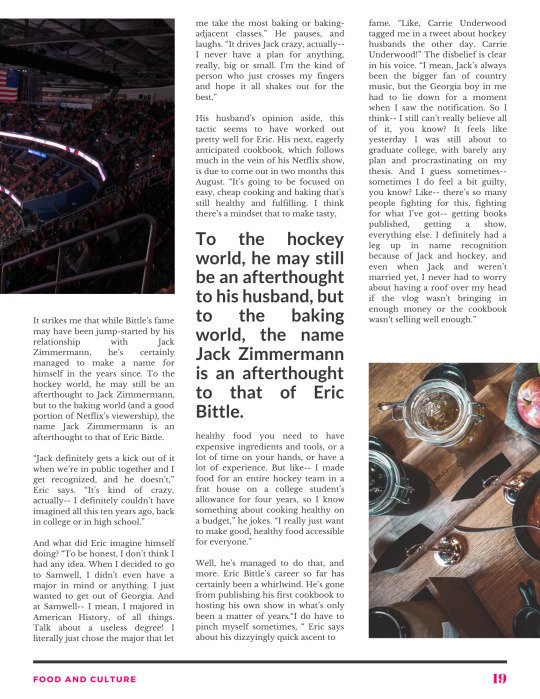

My first attempt at an interview fic! Read this on Ao3, or under the cut.
Spotlight on Eric Bittle
Interview by Elizabeth Chu
Photographs by Jack Zimmermann
The internet personality, author, and baker talks about his childhood, his relationship with Providence Falconers captain Jack Zimmermann, being a LGBTQ role model, why he struggled with his overnight success, and his upcoming cookbook.
I meet Eric Bittle in person for the first time on a Saturday afternoon, in a trendy coffee shop in downtown Providence. Even though I’ve heard of it in passing, I’ve never been inside. Eric obviously has, since when I approach the table where he’s chosen to sit, Eric is already chatting familiarly with one of the waitresses.
But after a couple minutes talking to Eric, I mentally revisit that assumption. Eric Bittle has a way of putting people at ease, of making even the most distant strangers feel like long-lost friends-- through his warm personality, but also through his seemingly-never ending supply of homemade baked goods. By the time I sit down across from him, I’m already in possession of a whole pie and two jars of jam.
Most of the celebrities I’ve met have on screen personalities that are vastly different in person, but the Eric Bittle I meet that Saturday could have been pulled directly out of his Netflix series or one of the episodes from his vastly popular vlog. He’s perennially bright and cheery, with a Southern drawl that’s been blunted by years in New England, but is still very present. When I mention it, Eric laughs. “I used to hate my accent, but I think it’s become as part of my brand as pies are. I’d probably lose all of my followers if I started talking like a Yankee,” he jokes.
The source of Bittle’s accent is his hometown-- Madison, Georgia, a town of barely four thousand people. When I ask what drove him to move up north, he gestures to himself as a whole. “Not too many opportunities for a baking, skating, Beyonce-loving gay boy in Morgan County.” He turns more serious, though, when he continues: “I was bullied a lot as a child. When I think back to my childhood, to living in Georgia-- for people who looked or acted different, it could be suffocating. I remember feeling like my future was just so starkly outlined for me-- going to a state school, settling down with a nice girl, spending the rest of my life just pretending. It sounds like overdramatic teenage angst now, I know, but I always knew if I wanted to live honestly, I needed to get out.”
And so Eric applied-- and was accepted to--Samwell University in Massachusetts, which touts itself as one of the most LGBTQ friendly schools in America, under the motto “one in four, maybe more.” According to Eric, it’s where he began to come to terms with himself and his identity, where he finally said the words “I’m gay” out loud, where he continued to bake and vlog and began to think seriously about a career in both, and where, perhaps most famously, he met his now-husband, Providence Falconers captain Jack Zimmermann.
“We both played on the hockey team, but we weren’t exactly friends at first,” Bittle says about his relationship with Zimmermann.
So, of course, I have to ask him-- what is it like, being a baker married to a hockey player? Eric and his husband seem like almost comical counterpoints in every aspect of their careers and personalities. Eric makes his living through baking and cooking, Jack plays in the notoriously-macho NHL. Eric has built a brand and a food empire off of cheeriness and Southern hospitality, Jack has a reputation of being a “hockey robot,” with his cold, generally disagreeable demeanor during interviews.
“Well, with it all laid out like that, it really does sound like we’re night and day,” Eric laughs. “But honestly? We just work. We both love skating-- that’s what we bonded over in college, actually. We also both technically majored in history, even though we have very different specialities and did so for pretty different reasons. But even our differences are compatible. Like, I love talking, he doesn’t, so we’re never talking over each other or silent. Also, pro hockey players have to eat an insane number of calories, so Jack’s always there to eat my cooking, and that’s really all I can ask for.”
Eric and Jack, who played on a line together briefly at Samwell, took the sports world by storm seven years ago when they kissed on the ice after the Falconers won the Stanley Cup, making Jack the first openly LGBTQ player in the NHL. The pair broke yet another barrier for LGBTQ people in hockey soon after, when Eric became the first openly gay NCAA Division I hockey captain.
When I ask Eric if he ever thought about following in his partner’s footsteps and pursuing a career in professional hockey, he just laughs. “Oh, definitely not. I love being on the ice, but I don’t think I would have made it very far in the NHL or AHL.”
His fame may have started out in the (relatively niche) world of professional hockey, but since graduating from Samwell, Eric has found incredible success beyond the legacy of that historic kiss. His first book, published five years ago, spent several weeks on the New York Times Food and Diet bestseller list, and was applauded as a fresh, vibrant take on Southern cuisine and desserts. Check, Please reads as seventy percent cookbook, thirty percent memoir, with every page infused with Bittle’s indomitable, ubiquitous personality. His vlog, which he started in high school and has updated continuously ever since, has millions of subscribers, who tune in every week to hear Bittle talk about everything from pies and cookies to relationships and family. Finally, and perhaps most famously, Bittle hosted his own Netflix series last year, applauded as a combination of Marie Kondo and Queer Eye, in which he taught baking with his usual brand of positivity and universal appeal, interspersed with feel-good moments and life lessons.
It strikes me that while Bittle’s career may have been jump-started by his relationship with Jack Zimmermann, he’s certainly managed to make a name for himself in the years since. To the hockey world, he may still be an afterthought to Jack Zimmermann, but to the baking world (and a good portion of Netflix’s viewership), the name Jack Zimmermann is an afterthought to that of Eric Bittle.
“Jack definitely gets a kick out of it when we’re in public together and I get recognized, and he doesn’t,” Eric says. “It’s kind of crazy, actually-- I definitely couldn’t have imagined all this ten years ago, back in college or in high school.”
And what did Eric imagine himself doing? “To be honest, I don’t think I had any idea. When I decided to go to Samwell, I didn’t even have a major in mind or anything. I just wanted to get out of Georgia. And at Samwell-- I mean, I majored in American History, of all things. Talk about a useless degree! I literally just chose the major that let me take the most baking or baking-adjacent classes.” He pauses, and laughs. “It drives Jack crazy, actually-- I never have a plan for anything, really, big or small. I’m the kind of person who just crosses my fingers and hope it all shakes out for the best.”
His husband’s opinion aside, this tactic seems to have worked out pretty well for Eric. His next, eagerly anticipated cookbook, which follows much in the vein of his Netflix show, is due to come out in two months this August. “It’s going to be focused on easy, cheap cooking and baking that’s still healthy and fulfilling. I think there’s a mindset that to make tasty, healthy food you need to have expensive ingredients and tools, or a lot of time on your hands, or have a lot of experience. But like-- I made food for an entire hockey team in a frat house on a college student’s allowance for four years, so I know something about cooking healthy on a budget,” he jokes. “I really just want to make good, healthy food accessible for everyone.”
Well, he’s managed to do that, and more. Eric Bittle’s career so far has certainly been a whirlwind. He’s gone from publishing his first cookbook to hosting his own show in what’s only been a matter of years.
“I do have to pinch myself sometimes, “ Eric says about his dizzyingly quick ascent to fame. “Like, Carrie Underwood tagged me in a tweet about hockey husbands the other day. Carrie Underwood!” The disbelief is clear in his voice. “I mean, Jack’s always been the bigger fan of country music, but the Georgia boy in me had to lie down for a moment when I saw the notification. So I think-- I still can’t really believe all of it, you know? It feels like yesterday I was still about to graduate college, with barely any plan and procrastinating on my thesis. And I guess sometimes-- sometimes I do feel a bit guilty, you know? Like-- there’s so many people fighting for this, fighting for what I’ve got-- getting books published, getting a show, everything else. I definitely had a leg up in name recognition because of Jack and hockey, and even when Jack and weren’t married yet, I never had to worry about having a roof over my head if the vlog wasn’t bringing in enough money or the cookbook wasn’t selling well enough.” He pauses, pensive, and it’s not the first time in this conversation that I mentally reassess my first assumptions about Eric Bittle. Behind the nationally famous smile and welcoming accent is a thoughtful young man still grappling with becoming a public figure and a role model, with a sprinkling of imposter syndrome, who doesn’t understand exactly what millions of people across the country see in him.
But perhaps that as well is an unfair assessment. It’s clear that Eric has a refreshing genuiness that few public figures possess, and that this is part of what has managed to speak to so many people from all backgrounds. That on some level, his modesty about his own fame is part of what constitutes his appeal.
When I mention this, Eric flushes a bright shade of pink. “Oh, aren’t you a flatterer. Well, I suppose so.”
So after this cookbook, what’s next? Is fatherhood on the horizon?
“I did mention that I never have a plan, didn’t I?” he quips. But he does confide that he and Jack have been talking about having a family. “We’ve always wanted kids, but there’s always been something going on. Jack’s job and being on roadies all the time, me trying to get my career started. We don’t want our kids to be raised by babysitters and nannies, you know? We want to be there for them, so while it’s definitely something we’re considering, we’re trying to balance timing. But it has been a couple years, so.” He blushes. “We’re revisiting the idea.”
“But other than that-- I have been approached about the possibility of some other projects and shows in the future, but I probably can’t talk about those,” he says. “And though it’s always been a dream of mine to own a bakery, that would be a pretty huge commitment. So I guess I’m just trying to say that I’m not really sure exactly what comes next.” Nevertheless, he grins, as if to say, and isn’t that exciting ?
Fatherhood or his own bakery-- I’m sure that no matter what comes next for Eric Bittle, he’ll forge ahead with his characteristic positivity and Southern grace, with plenty of baked goods along the way. *
#omgcp#eric bittle#jack zimmermann#interview#multimedia fic#art#magazine#fic#omgcp fic#zimbits#pov outsider#omgcheckplease
534 notes
·
View notes
Text
2019 In TV - My Top 10 Shows
This past year may have sucked balls in a lot of ways, but we certainly never got short-changed when it came to our TV. There was an absolute WEALTH of truly cracking TV around, both on regular networks and on the various on-demand platforms, and so here is my pick of the best, my absolute favourites of 2019.
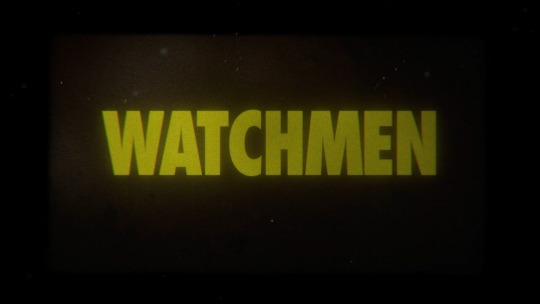
10. WATCHMEN
Lost co-creator Damon Lindelof brings us a blinding sequel to comic book legend Alan Moore’s legendary graphic novel with a delightfully trippy, ruthlessly efficient rug-puller that seems pretty tailor-made for HBO. Old faces return in interesting ways, while there are some cracking new “masks” on offer, particularly Regina King’s Sister Night and the always-brilliant Tim Blake Nelson as morally complex antihero Looking Glass (in some ways very much the show’s own answer to Rorschach). It never goes where you expect it to go, and refuses to give easy answers to the questions it raises, effortlessly paving the way for more next year ...


9. THE BOYS
Amazon offers up its own edgy, thoroughly adult superhero property with this darkly funny antiheroic gem based on the cult Garth Ennis comic, expertly adapted by Supernatural creator Eric Kripke. Karl Urban dominates as Billy Butcher, the foul-mouthed, morally bankrupt “leader” of a makeshift crew of mercenaries, hitmen and psycho killers devoted to “taking care of” superheroes when they inevitably go bad. Season 1 ultimately serves as an origin story, showing how the team come together, laying quality groundwork for the incoming sophomore tour that promises to open the already fascinating world out significantly.


8. PREACHER (SEASON 4)
More Garth Ennis, namely this blinder of a closing season for AMC’s consistently impressive adaptation of his best known series for Vertigo comics. Surprisingly epic, deliciously subversive and constantly, darkly hilarious, this thoroughly non-PC series from showrunners Sam Catlin, Evan Goldberg and Seth Rogen (yes! I Know!) certainly went out on a high note, providing its loyal followers with perfectly-pitched bow-outs and sometimes heartbreaking goodbyes for all its players, especially its dynamite leads, Dominic Cooper, Ruth Negga and, in particular, Joe Gilgun as unapologetic bad boy vampire Cassidy. A worthy end to one of my all-time favourite TV shows.

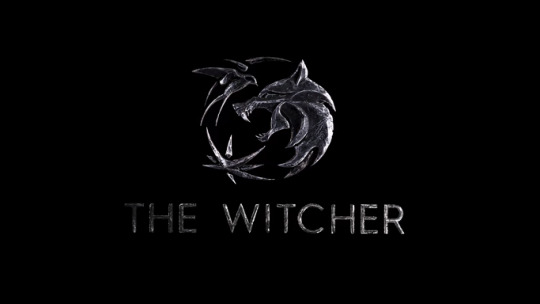
7. THE WITCHER
While it’s clearly taken its look from the wildly successful video games, Netflix’s second most ambitious long-form offering of the year takes its lead from the fantasy book series by Polish author Andrzej Sapkowski that started it all. With its somewhat episodic set-up and decidedly twisted narrative timelines, it take a few chapters to get the hang of it, but there’s plenty to draw you in, from the exotic world-building to the frenetic action and compelling collection of richly crafted characters. Henry Cavill is the titular hero, lovably grouchy mutant monster-hunter Geralt of Rivia, but the real scene-stealer is co-star Anya Chalotra as roguishly self-serving mage Yennefer of Vengenberg.

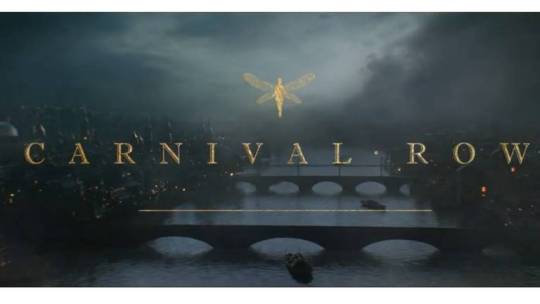
6. CARNIVAL ROW
One of the year’s two big sleeper hit TV surprises for me was this inventively offbeat allegorical Amazon fantasy series from The 4400 creator René Echevarria and screenwriter Travis Beacham. Orlando Bloom and Cara Delevigne are the star-crossed lovers at the heart of this intriguingly dark and dirty murder mystery thriller set in Victorian London-esque city-state the Burgue, in which humans struggle to co-exist alongside a struggling disenfranchised underclass of fae (fairies, fawns, centaurs and the like). The racial turmoil undertones are writ large throughout, but this is far more well-written and lavishly appointed than you might expect on first glance, and almost ridiculously addictive viewing.


5. LOVE, DEATH + ROBOTS
My other big TV surprise was this wonderfully bizarre sci-fi anthology series of animated shorts from Netflix, mostly adapted from an eclectic selection of short stories from a wide range of top-notch literary talent including Peter F. Hamilton, John Scalzi, Marko Kloos and Alastair Reynolds (a particular favourite of mine). As you’d expect from the brainchild of Deadpool director Tim Miller and producer David Fincher, this is edgy, leftfield stuff, frequently ultra-violent and decidedly adult, and the wildly varied nature of the material on offer makes for a decidedly uneven tone, but there are some absolute gems on offer here, my favourite being Suits, an enjoyably simple tale of salt-of-the-earth farmers on an alien world utilising clunky mech suits to protect their settlement from rampaging giant xeno-bugs.

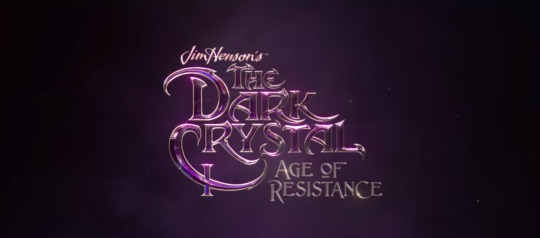
4. THE DARK CRYSTAL: AGE OF RESISTANCE
The show with the biggest cinematic wow factor in 2019 had to be this long-awaited prequel series to Jim Henson’s classic fantasy movie masterpiece, created for Netflix by, of all people, Louis Leterrier (yes, the director of The Transporter, Now You See Me and Clash of the Titans, if you can believe it). The technology may have evolved in leaps and bounds, but there’s a wonderfully old school vibe in the delightfully physical puppet effects used to bring the fantastical world of Thra and its denizens to life, so that it truly does feel like it’s based in the same world as the film. This was EASILY the most visually arresting show of 2019, packed with exquisite character, creature and set design that perfectly complements the awesome work done by Henson and Brian Froud on the original, while the writers have created a darkly rich narrative tapestry that makes Thra seem a more dangerous place than ever.

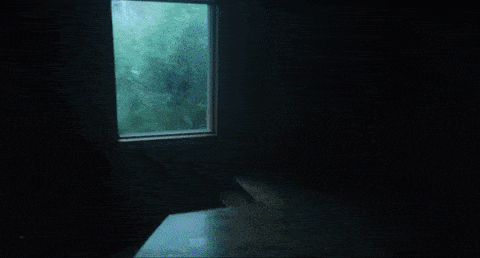
3. THE UMBRELLA ACADEMY
I was a HUGE fan of My Chemical Romance frontman Gerard Way’s magnificently oddball alternative superhero comic, so when I learned that Netflix were adapting it I was a little wary because I knew how spectacularly hard it would be for ANY showrunners to get right. Thankfully Steve Blackman (Fargo season 2) and Jeremy Slater (The Exorcist TV series) were the right choice, because this perfectly captured the outsider nature of the characters and their endearingly dysfunctional family dynamic. Ellen Page, Tom Hopper (Black Sails, Merlin), David Castañeda and Emmy Raver-Lampman are all excellent as the more “functional” Hargreeves siblings, but the show is roundly stolen by Misfits star Robert Sheehan and Nicky, Ricky, Dicky & Dawn’s Aidan Gallagher as nihilistic clairvoyant Klaus and the old-man-in-a-child’s-body sociopath known only as Number Five. Consistently surprising and brilliantly bonkers, this was definitely the year’s most wonderfully WEIRD show.

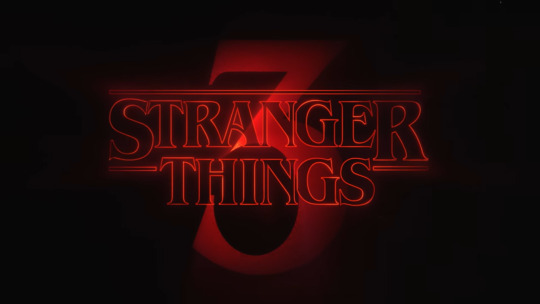
2. STRANGER THINGS (SEASON 3)
Writer-director duo the Duffer Brothers’ ultra-nostalgic 80s-set coming-of-age sci-fi horror series remains the undisputed jewel in Netflix’s long-form crown with this consistently top-drawer third season expertly maintaining the blockbuster-level standards we’ve come to expect. This year the cross-dimensional shenanigans have largely been jettisoned, replaced by a gleefully nasty through-line of icky body horror that would make major influences like David Cronenberg and Stuart Gordon proud, as perennial teenage bad boy Billy Hargrove (the fantastically menacing Dacre Montgomery) becomes the leader of an army of psychic slaves under the control of the Upside Down’s monstrous Mind Flayer. The kids are all brilliant as always, Winona Ryder and David Harbour really get to build on their strong-yet-spiky chemistry, and the show is almost effortlessly stolen by Joe Keery as one-time golden boy Steve Harrington and series-newcomer Maya Hawke as his nerdy new foil Robin Buckley, who were very nearly the cutest couple on TV in 2019. Another gold standard season for a true gold standard show.


1. GOOD OMENS
Sadly, legendary author Terry Pratchett died before he could see the adaptation of one of his most beloved novels (and one of my all-time literary favourites too) see the light of day, but at least his co-author Neil Gaiman was around to bring it to fruition with the aid of seasoned TV director David Mckinnon (Jekyll, Doctor Who, Sherlock), and the end result sure did him proud, perfectly capturing the deeply satirical voice and winningly anarchic, gleefully offbeat and gently subversive humour of the original novel. David Tennant and Michael Sheen could both have been born to play Crowley and Aziraphale, the angel and demon nominally charged with watching over the young Antichrist in preparation for his role in the End Times, even though they would both much rather the world just went on quite happily the way it is, thanks very much. This is about as perfect an adaptation as you can get, the six hour-long episodes giving the surprisingly complex story time to breathe and grow organically, and the result is the most fun I spent in front of my TV this year.

#best TV 2019#watchmen#the boys#preacher#the witcher#carnival row#love death + robots#love death & robots#the dark crystal age of resistance#The Umbrella Academy#stranger things 3#good omens
294 notes
·
View notes
Text
HAPPY BIRTHDAY ERIC FLEMING! 🎂🥳🎊🎁🎈💃🕺

Eric was born as “Edward Henry Heddy Jr.” July 4th, 1925 in Fillmore Hospital, situated just outside of his hometown of Santa Paula, California. Edward would later become known to millions of fans around the world under his stage name “Eric Fleming”, and despite starting life with an unfathomably shitty childhood, the actor did not let it define him. It’s a testament to the big guy’s talents that he still has fans - new and old - keeping his memory alive today.
I wish I had a baby photo to share, but they just don’t seem to exist. So here’s the earliest photo I’ve managed to find from November 1948. Eric is just 23 years old and attending the wrap party for the movie “Massacre River” with friend and one of the movie’s stars, Carole Mathews. Fleming wasn’t even an actor yet, instead working behind-the-scenes at Paramount as a gaffer, grip, and/or carpenter (depending on the source).
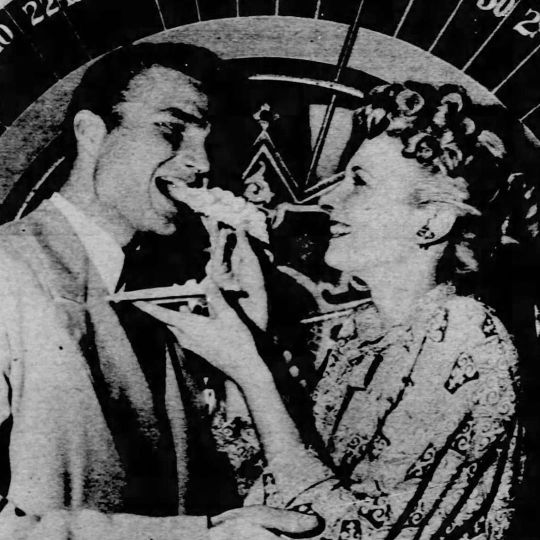
After his training, the newly minted actor now “Eric Fleming” (but still Ed to his friends), Carole, Jack Kelly - star of “Maverick” and brother to Grace Kelly - and a friend, hopped in an old car and headed off on a road trip across the States. The friends had dreams of finding stardom on New York’s Broadway, but within months Eric was the only one still doggedly pursuing that dream. Of the actors, Jack Kelly had headed back to LA, and Carole Matthews - who already had an established career - was back working on movies in the US and abroad.
Eric continued undeterred, and would continue to do so for the next decade, despite suffering disappointments with several short lived plays and one notoriously expensive flop. The young actor was also supplementing his work with modelling, including dipping his toes into the world of westerns for the first time.
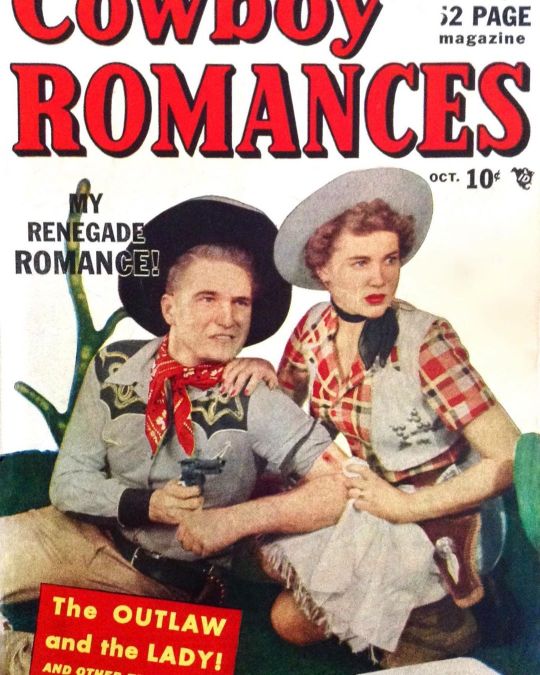
The comic cover above is from 1949, making Eric just 24 years old, and just look at that baby face!
He also modelled for commercials, including the Schaefer Beer ad below; the brand still exists today.

IMAGE CREDIT: The Billy Rose Theatre Collection, NYPL.
Not to mention TV commercials and infomercials for Chevrolet, including this bizarre moment, circa 1950.

Eventually though, Eric did manage to carve out a career on Broadway, with several hit plays under his belt, as well as guest appearances in many NY shot tv shows, and a short foray back to California and Paramount studios to star in movie “Conquest of Space” in 1954.
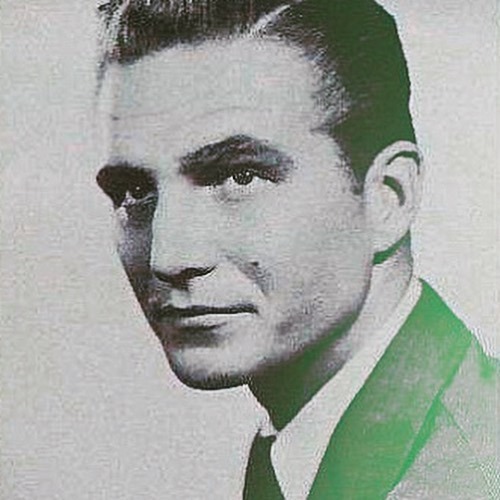
Eventually the actor would head back permanently to California, to star in two more movies, “Queen of Outer Space” and “Curse of the Undead” in 1958. But disillusioned with acting and a career that while it supported him, wasn’t finding the success he clearly craved, Eric intend on heading for a quieter life in Hawaii. On the way through Los Angeles he landed the lead role of Gil Favor in the pilot for Rawhide. The show had a bumpy start but it would go on to a long run of success, keeping Fleming in California for the next 8 years. But the island life never stopped calling, and once his time was up on Rawhide, Fleming made his long held dream a reality, moving to Hawaii in early 1966.

Eric’s biggest, unfulfilled wish was to have children, something he’d begun to open up on his anxieties about, stating he would not marry unless he was ready, and could become a father. He seemed both scared and determined not to repeat the pain of his own childhood, vowing, “I would never want children unless I could give them not only whatever money can buy, but my own presence whenever and wherever it is needed”.

Fleming would sadly never have children, but there are generations of fans born since his death, who continue to be enamoured by both his acting talents and personal story.
Eric went to hell and back, and suffered so much bad fortune in his life, ultimately ending in an untimely, tragic death, but I don’t think it does nor should define him. This dude is the poster child for endurance, no matter how many times nor how badly he got knocked down, he picked himself back up, and doggedly kept going after what he wanted. So here’s to you big guy, on your 95th birthday; still loved, still inspiring, still remembered.
#Eric Fleming#My Hero#This dude was seriously handsome#should have been a dad#his story kicks you right in the damn feels#gone but never forgotten#happy birthday big guy#hope the fish are biting#the sun is out#the music and dance partners are endless#and the snacks are heavenly#appreciation post#rawhide
43 notes
·
View notes
Text
The Great Jam Debacle: the full story
(+ and the parallels to Bitty’s life)
(well, whether or not it parallels Bitty’s life is up to you to decide. i’ll lay out the details, you fill in the holes and let me know. also, this may or may not make sense. it is past my bedtime. forgive me.)
First suggestion of an impending threat to the Bittle Family Jam Heritage, also known as The Great Jam Debacle (TGJD): the first update we see Bitty after Jack’s dramatic last-minute graduation kiss. At this point in time, the only people who know Bitty and Jack are together...are just Bitty and Jack themselves.

Next appearance of The Jam: Eric Bittle nopes out of a conversation about an impending Educational Task he must do with excellently practiced denial (a trait that seemingly runs through all the Bittle men). This occurs right after we see Bitty and Jack have their first conversation about Bitty making up excuses to his teammates about why he knows so much about the Falconers - aka, the first signs of stress we see in Bitty about hiding his relationship.

A couple updates later begins with Jack opening a PB(ittle)&J sandwich made by yours truly the morning before one of his games. Jack gets injured during his game, and Bitty decides he will never again use the dastardly Pluot Jam again.


I was curious if this jam was indeed the betraying Judy’s Jam we’d heard so much about. After some extensive, thorough research into Ngozi’s blog updates, I made the discovery that Bitty had long since abandoned the Suzanne-Bittle-Jam-Heritage, and has crossed over into Aunt-Judy-Jam territory by this point in time.
This raises the question: when did Bittle first decide to try a new recipe? And that particular recipe? A forbidden one? What called him to it? Surely, such preservation treason would not come without reason. We may never know, but intriguing to speculate about, nonetheless.


In any case, it seems suggested that jam has the power to incur major life events. Pluot Jam = bad, Apricot Spread = Good Defense. Interesting.
After this, we go a few updates that are, tragically, jam-less. Bitty’s stresses of hiding his relationship from the Haus comes to a head, we get the Hi, Honey voicemail and phone call and Jack’s 5AM rain-soaked impromtou visit to the Haus, and Bitty and Jack decide to come to a compromise by coming out to Bitty’s teammates, and also to Jack’s parents.
Things are also going well for the both of them hockey-wise. A couple updates later Jack even goes on to tell George and a few of his own teammates.
But fear not! The jam makes a triumphant surprise reappearance in the update where Nursey and Dex get their King Solomon-style dibs. In this update, it is revealed to us that not only is Bitty following her jam recipes, but also her sterilization techniques. You’re playing a dangerous game here, Mr. Bittle.
Nothing too significant happens with regards to Bitty’s life in that update but...

The previous update just so happens to be followed by the one where Bitty meets Jack’s teammates and their significant others. Another big step towards coming out in their relationship. Another step Bitty takes in becoming more comfortable with himself as Jack’s boyfriend.
Interestingly enough, in that same update we get a flashback to the moment where Jack introduces the fact that he has a boyfriend to the rest of his team ... with none other than, you guessed it, Bitty’s PB&J, made with the one and only life-changing jam, a la Aunt Judy.


This is followed by one of the last updates for Bitty’s junior year, where Samwell doesn’t make it past the first round in playoffs. Stresses are running at an all-time high for Bitty, what with not making it into the playoffs, stressing about Jack’s playoffs too, still not having told his parents about Jack, still not having told his parents about his summer plans with Jack, probably not doing so well in school because he’d rather bake, and on top of it all, having all the seniors - the last people in the Haus that have been by Bitty’s side since his first year at Samwell - all graduating ... Bitty gets himself into a bit of a jam, to put it into his own words.


At the end of that same update, Jack visits Samwell, and Tater comes along, too. Tater posts a few nice pictures on social media from his visit.
I quite enjoy this one, with the transgressing jam jars in full and open display, WITH credit to its truthful owner (thank god Suzanne doesn’t check Tater’s social media regularly) while a familiar blonde head, conveniently, is just out of the shot.

BUT!!!!!! It does not end there.
In the words of Her Majesty Ngozi in that update’s blog notes:

She’s been hinting at this jam thing all along, y’all.
Judy comes up in the comics once more (sans-jam), but coincidentally, it just so happens to be in the same comic where Bitty has a harrowing phone call with his mother and tells her about his plans to stay with Jack for the summer. He also tries to tell her about his relationship, but the words don’t make it out in the end.

Now, here’s where things get even more interesting. The next update is dedicated to Jack’s team advancing in the playoffs. The update that follows is the Center Ice update, in which Jack’s team finally wins the cup starts off with a flashback to a scene where Bitty makes Jack a PB&J sandwich.
Not just any PB&J sandwich, but the very first time he made a pre-game PB(etrayal)&J(udy’s Jam)’s for Jack, as a matter of fact. Just like his mama used to make them!
(well, just like his mama used to make them....except for one (jam) tiny (jam) little (jam) thing (jam) )


Lots of Big, Life-Changing things happen in this update.
We see Bitty give the first pre-game good-luck PB&J to Jack (it’s assumed after this he makes one for Jack before every game he’s able to be there for), and Jack says he loves Bitty for the first time.

And this scene, as well all know, is followed by the iconic, heart-stopping scene where the Falconers win, and Bitty and Jack say up yours to all the haters and have their happy-place kiss right on Center Ice. And I’m pretty sure Jack definitely had a good-luck sandwich from his boyfriend before the game, too.
(Still don’t think Judy’s jam has magical, life-event-incurring, transformative properties y’all?)
Now, as hockey starts fading out, we go through a couple jam-less updates. But lots of things still happen! Bitty comes out to his mother over an emotional phone-call, and firmly tells her that he isn’t coming home that summer.
The next update starts with one of Bitty’s blog updates. And along with him making most of his social media private, and right before he takes a social media hiatus -- the jam feud makes a reappearance.

(on that note - part EIGHT???????????????)
After that, we have a lack of jam in the next few updates.
What’s worth noting, however, is that in those same few jam-less updates, Bitty starts his senior year as captain of the Samwell Men’s Hockey team, and is officially out and open to the world about his relationship with Jack (enough to speak about it in his vlogs, too)! He’s also not taking the role of captain lightly - he’s confident, and he’s rising to the challenge that a position like that calls for, he’s reaching out to other sports captains at the school, and he’s not scared to boss around a bunch of jocks. In other words, he’s finally growing into himself more and more as a captain, as a person, and as Eric fuckin’ Richard Bittle.
Things are going well for Bitty. And then, right when an unexpected visitor brings things to a screeching halt and forces Bitty to deal with his problems (and stop avoiding them) a little sooner than expected - while the treasonous jam itself does not make an appearance, a certain aunt does:

Of course, it’s up to your interpretation if the Aunt-sighting right when Bitty’s father makes a visit, right before Bitty gets checked in the following game in the same update, is nothing but a coincidence, but.............it just makes sense, y’all.
Now, we’re approaching the final showdown. A jam-down, if you will.
(No? I know. I’m sorry. I know that was bad. I’m tired. It’s past midnight here. Just hang in there. We’re close to the end.)
Bitty finally talks it out with Coach, and Coach tells him that he is good. After this, there’s only one person left that Bitty has yet to completely speak frankly and resolve things with, and that just so happens to be the same person from whom he’s hiding this whole Great Jam Debacle secret from in the first place.
Mama Bittle.
And sure enough, the next time (and final? yet to be seen!) the jam makes an appearance, is right after Mrs. Bittle tells Bitty that she’ll love him no matter what and no matter who he brings home, and that he’ll always have a home to come back to. Bitty clearly feels relieved and happy by her words ... but there’s still one last thing left for him to be honest about.

And she takes it well.

Just to top it off, in the words of The Great One, Ngozi Ukazu, in that week’s blog update:

She also said in the same blog update:

I hope I am doing this a vague, partial semblance of justice, Ngozi.
(Also, thank you for saying that there is indeed a full explanation behind it and for making me feel less crazy for spending 4 hours finding metaphors in things like curtains)
Anyways - last but definitely not least, in the next update, Bitty finally takes a moment to be truthful by admitting to himself to Jack about how he has no idea what he’s going to do after graduation, and how that’s worrying him. And by voicing those fears aloud, he is finally forcing himself to be honest to himself, and talk about something he’s probably been avoiding thinking about.
And what do you know, in the same update, we get to witness the actual woman in the flesh, the Founding Father of The Judy Jam, the Transgressing Preservative Contender - Judith Phelps.


And that, folks, brings us to the end of this scintillating journey. (for now, anyway. who knows what other chaos-unfolding jellyroll or johnnycake recipes Judy has under her sleeve. bitty’s still got to properly finish his thesis. keep an eye out for a potential part 2).
Thanks for taking the time to hear me extensively ramble at length about preservation heretics and their subsequent parallels to the triumphs and defeats, the epic highs and lows of Collegiate Level Ice Hockey Bitty’s journey in opening up to those around him, while also being true to himself. Hope you had a good time. If you didn’t see the parallels, that’s fine too. If there’s one thing you should take away from this, it is that Jam is not to be taken lightly. It has life-changing properties.
I should probably spellcheck and edit this before posting, but it’s 2:57 in the morning, I think I hear birds chirping, and writing this has made me REALLY crave a PB&J sandwich with some honest-to-god real jam, so I think I might make one right now. Maybe also find a grocery store that’s open 24 hours.
Any errors or confusion you may have come across in this post can be blamed on jam.
#omgcp#omg check please#zimbits#eric bittle#jack zimmermann#check please#the great jam debacle#yall I am GOING THROUGH these omgcp feels tonight
199 notes
·
View notes
Text
How Thor Changed the Marvel Cinematic Universe
https://ift.tt/33NlKGy
Marvel’s Thor, the first theatrical live-action film to feature the comic book giant’s version of the Norse God of Thunder, opened in theaters a decade ago, on May 6, 2011.
Directed by Kenneth Branagh and starring a then little-known Chris Hemsworth in the title role, Thor was the fourth film in the still-nascent Marvel Cinematic Universe. It was also — as we look back at it now — a pivotal one in the development of the MCU.
“I’m very proud of my part of it,” Branagh told us a couple of years ago about his handling of Thor. “Which was providing a sort of backbone that they could comically riff off, but at least it originally contained some of the high stakes Nine Realms import that that larger mythology has to have as well.”
Thor took the franchise off the Earth for the first time and into the cosmic side of the Marvel mythology, introducing audiences to the Nine Realms, the kingdom of Asgard and other mind-bending concepts that comic fans had adored for years but which were a major risk to put in front of mainstream moviegoers.
Even the character of Thor — with his helmet and his hammer and his arch way of speaking — often seemed to skate perilously close to laughable in the pages of the comics themselves. But he was also a mainstay of the Marvel line and a charter member of the Avengers, the superhero team that Marvel based its entire initial run of films upon.
Marvel
Thor didn’t take the Rainbow Bridge to the screen
A Thor movie based on the Marvel Comics version of the character had, surprisingly, been bandied around for years even before there was a Marvel Cinematic Universe.
The God of Thunder debuted on the page in Journey into Mystery #83 (August 1962), created by Stan Lee, Larry Lieber, and Jack Kirby. A founding member of the Avengers, he joined Iron Man, the Hulk, Ant-Man, and the Wasp in the pages of The Avengers #1 (September 1963). In the ensuing decades, he has starred in multiple iterations of the Avengers comics, plus many ongoing and limited series of his own.
An animated version of the character debuted in 1966’s Marvel Super-Friends show, while the first live-action incarnation of Thor (played by Eric Kramer) showed up in the 1988 TV movie The Incredible Hulk Returns, a follow-up to the late 1970s series The Incredible Hulk.
While Thor continued to turn up in various animated Marvel properties, it was in 1991 that the first full-length, live-action Thor movie was proposed — by no less than Sam Raimi.
The director, who later went on to make the first three Spider-Man movies and who is now working in the MCU on Doctor Strange in the Multiverse of Madness, revealed to the The Hollywood Reporter in the wake of Stan Lee’s passing that he pitched a Thor movie to the Marvel Universe co-creator over lunch.
“We worked together writing treatments and took it to Fox and pitched it,” Raimi recalled. “And they said, ‘Absolutely no. Comic books don’t make good movies.’ This was in 1991.”
The rights to Thor bounced around Hollywood for a few more years (at one point it was set up at Sony with David S. Goyer writing and possibly directing) until landing back at Marvel Studios, which had reinvented itself as an independently financed production company in 2005 with distribution through Paramount Pictures. The studio, run at the time by David Maisel with Kevin Feige as president of production, hired Mark Protosevich (I Am Legend and the unfilmed Batman Unchained) to write a script for Thor, with Matthew Vaughn (X-Men: First Class) coming aboard to direct in August 2007.
Marvel
Enter Tom Hiddleston as Loki…
No sooner did Matthew Vaughn sign up to direct Thor than he seemingly left just as quickly, although it was officially announced in May 2008 that he was departing. Creative and budget issues seemed to have sealed his exit. “Marvel loves the script,” he wrote in The Guardian in late 2007. “The only problem is that it has been costed at $300m and they ask how I am going to reduce it by $150m.”
Even though Thor had already been scheduled for a June 4, 2010 release date, Marvel still had to find a director. Talks were held with Guillermo del Toro, but he decided to direct The Hobbit instead (which he ended up leaving as well). At the end of its search, Marvel finally chose Kenneth Branagh, the Irish actor and director best known for his epic adaptations of Shakespeare’s Hamlet and Henry V — which kind of provided an idea of the tone Marvel was looking for.
Branagh was finally signed in December 2008, telling MTV News, “It’s a chance to tell a big story on a big scale…It’s a human story right in the center of a big epic scenario.”
Once Branagh was signed, the movie’s release date was pushed back from June/July 2010 to May 6, 2011, providing plenty of time for the film’s extensive visual effects to be designed and created and for Branagh to find his cast — starting with the God of Thunder himself.
Read more
Movies
Upcoming Marvel Movies Release Dates: MCU Phase 4 Schedule, Cast, and Story Details
By Mike Cecchini and 1 other
Movies
How Black Widow Could Build The MCU’s Future
By Kayti Burt
The first person allegedly approached was Daniel Craig, who had just starred in his second James Bond film, Quantum of Solace. It was because of his commitments to the already massive 007 franchise that Craig turned down the hammer-wielding Asgardian, although it’s somehow hard to imagine the tough-as-nails Craig as the egotistical (at least at first), young Odinson.
A long list of young, relatively unknown actors tested for the part, including Chris Hemsworth (who was just making his brief but scene-stealing appearance as James Kirk’s father in J.J. Abrams’ Star Trek), his brother Liam, the equally obscure Tom Hiddleston, Kevin McKidd from Grey’s Anatomy, Alexander Skarsgard (Godzilla vs. Kong), Charlie Hunnam (Sons of Anarchy), Joel Kinnaman (The Suicide Squad), and others. But Chris Hemsworth ultimately won the day, with Hiddleston landing the consolation gift that would keep on giving, the role of Thor’s villainous adopted brother Loki.
“That was my starting point, was that you have a character with a predisposition toward mischief,” Hiddleston said about playing the trickster god, during a 2010 set visit attended by this reporter in Manhattan Beach, California. “An inclination toward chaos and a delight in imbalance, and you couple that with the fierce intelligence that he has, and a chess master’s ability to manipulate events three or four steps ahead of the game.”
Adding even more gravitas to the production was the signing of the legendary Anthony Hopkins to play Thor’s father, Odin, along with Natalie Portman as Jane Foster, Rene Russo as Thor’s mom Frigga, Colm Feore as Laufey, the king of the Frost Giants, Idris Elba as Heimdall, and others. Also signed: Samuel L. Jackson for his third appearance as Nick Fury (in an end credits bonus scene) and Jeremy Renner as Clint Barton/Hawkeye, marking the live-action debut of the bow-and-arrow-wielding Avenger.
Filming on Thor began in mid-January 2010 and wound down in early May, with shooting taking place at Raleigh Studios in Manhattan Beach, California (Marvel’s studio home in the MCU’s early years), Santa Fe, and other parts of New Mexico, and locations in northern California.
Colm Feore told The Deadbolt that the Shakespearean training which he, Branagh, and Hopkins all shared enabled them to quickly communicate with each other while shaping the characters and finding the right tone: “One of the things that was enormously helpful on Thor was that during the breaks, Tony, myself, and Ken would be talking in Shakespearean shorthand about what the characters were doing, what we thought they may be like, and how we could focus our attention more intelligently.”
During that same set visit to the Manhattan Beach set of Thor, Marvel president of production Kevin Feige told this reporter and others that the movie was going to feature more extensive post-production work than other Marvel films. “When you walk around Captain America or Iron Man, you can get it,” he explained. “With Thor, what you’re seeing is only 30% of what the movie will be. This is the big question mark and to me that makes it the most exciting. I like it when people don’t exactly know what we’re going to do.”
Reshoots were completed in late 2010, while The Avengers director Joss Whedon shot the end credits scene in which Nick Fury reveals the Infinity Stone known as the Tesseract to Dr. Erik Selvig (Stellan Skarsgard).
Marvel
Marvel takes a big swing with Thor’s hammer
Introducing Thor and the Asgardians — who were essentially aliens, with technology so far ahead of our own that they seemed like gods to the ancient, more primitive people of Norway more than a millennium ago — was a major gamble for the MCU and its then-president of production (and now Chief Creative Officer) Kevin Feige.
Out of Marvel’s first three films, Iron Man and Iron Man 2 were massive, out-of-the-box hits, while The Incredible Hulk was a middling success at best. Yet all three films were Earthbound and dealt with plausible (as far as it went) science and technology. The science of Thor was — to borrow a phrase from the late science fiction titan Arthur C. Clarke — indistinguishable from magic.
“Asgardians are kind of ‘been there, done that’ when it comes to that kind of stuff,” said co-producer Craig Kyle to this reporter and others on the set visit. “For them to send you across the universe, it’s as easy as turning a key … Their technology is only as sophisticated as it needs to be to do extraordinary things.”
Making Thor, Odin and the other inhabitants of Asgard, Jotunheim and the rest of the Nine Realms into extra-terrestrial beings mistaken for gods by ancient humans took Thor away from sword-and-sorcery and fantasy and more overtly into the science fiction genre. But it also provided the film with a back story and mythology that was perhaps easier for modern movie fans to swallow — more Star Wars than the Völuspá.
“We just kept trying to humanize it all, and keep it very real,” Chris Hemsworth told Superhero Hype at the time about his approach to the title character. “Look into all the research about the comic books that we could, but also bring it back to ‘Who is this guy as a person, and what’s his relationship with people in the individual scenes?’ And working with someone like Kenneth Branagh, who has all those bases covered and has so many ideas, it was a hell of a time!”
In addition to taking the big creative risk of bringing Asgard and Thor to the screen, the movie took several other chances as well. Starting a tradition that Marvel would return to with films like Captain Marvel and Guardians of the Galaxy, Thor did not function as a traditional origin story. We meet Thor, Loki, Odin, and enter Asgard with only a brief introduction detailing the history of ill will and war between the Asgardians and the Frost Giants.
Thor’s journey in the film is not that of an ordinary character being bestowed with great powers and learning how to use them, the typical arc of a superhero film. He is fully formed here, if flawed, and as the film progresses he learns to be a better version of the immensely powerful being that he already is — with the help of the human beings that he meets during his fall to Earth.
When Thor — the likely successor to his father’s throne — reignites hostilities with the Frost Giants partially due to his own immaturity, Odin decrees him unworthy of wielding Mjolnir and banishes him, powerless, to Earth. That leaves the door open for the crafty Loki — who has discovered that he is not Asgardian after all, but the child of Frost Giants — to manipulate and scheme his way into power himself.
Marvel’s other big gamble was making Loki a much more fully developed antagonist than had been previously seen in many comic book movies. Skillfully portrayed by Hiddleston in a performance that made him an instant star, Loki is an empathetic, nuanced character whose longing for the love and attention of his adopted father — who lavishes more of both on Thor — leads him down a dark path and into a character arc that would take several years and movies to play out.
“I think Loki intuitively feels that he doesn’t belong there, he doesn’t belong with the family in Asgard and doesn’t belong in the pantheon of gods,” said Hiddleston at the time. “He’s confused about his place in the universe … We all reach a point in our lives where we think, ‘What the hell are we supposed to do with our life?’ Thor reaches that point in this film and Loki does as well, so yes, maybe if Odin had made him feel valued and respected and essential to Asgard, then it would have been okay.”
Marvel
Thor smashes all preconceptions
Thor had its world premiere in Sydney, Australia on April 17, 2011 and opened in that country — Hemsworth’s native land — four days later. It premiered in 56 more markets before finally opening in North America on May 6, 2011.
The film earned a 77% fresh rating and mixed reviews on Rotten Tomatoes, with critics praising the performances by Hemsworth and Hiddleston, as well as the grandiose family drama on Asgard, but less impressed by Thor’s journey to Earth and the climactic battle there against the massive golem-like Destroyer sent by Loki to kill Thor.
More importantly for Marvel, the film connected with audiences despite the perception that Thor was largely unfamiliar or dated. Thor earned $181 million at the North American box office and a further $268 million abroad for a worldwide total of $449 million.
While that ranks it near the bottom of the 23 MCU movies released to date (along with Ant-Man and Captain America: The First Avenger), it was a far from shabby showing for the early MCU and proved Marvel’s calculation that it could expand Marvel’s footprint on film beyond already established characters like Spider-Man, the X-Men and the Hulk.
“I liked it when people said, ‘Iron Man’s the B-Team. You’re calling out the B-Team!’ We knew it wasn’t,” said Feige on set about using what were perceived as lower-tier Marvel heroes. “We knew it was going to be great. And that holds true for Thor … here’s another one that will redefine us and at least raise the bar of what a comic book movie is, for both people who’ve read comics and those who haven’t.”
Thor expanded the boundaries of the MCU into the realms of space, alternate dimensions and cosmic conflicts, while putting another key part in place for the impending arrival of the Avengers. And while 2013’s follow-up, Thor: The Dark World, was a misstep and considered one of Marvel’s few outright failures, the studio brilliantly reinvented the character in 2017 with Taika Waititi’s Thor: Ragnarok, moving him away from the initial Shakespearean grandiosity and into a more humorous space.
cnx.cmd.push(function() { cnx({ playerId: "106e33c0-3911-473c-b599-b1426db57530", }).render("0270c398a82f44f49c23c16122516796"); });
That in turn allowed Thor and Hemsworth to have one of the most profound character arcs across the entire span of Avengers: Infinity War and Avengers: Endgame. His story in those films, the box office clout of Ragnarok, and Hemsworth’s enthusiasm for the role led Marvel to commission 2022’s Thor: Love and Thunder — marking the first time an MCU hero is venturing into a fourth solo movie.
Ten years later, while not a perfect film by any means, Thor is still an enjoyable, consciously weird Marvel epic that proved the God of Thunder could bring the lightning even to modern audiences. And while Thor has seemingly abandoned the throne of Asgard for now, his first film’s place in the MCU pantheon is secure.
The post How Thor Changed the Marvel Cinematic Universe appeared first on Den of Geek.
from Den of Geek https://ift.tt/2RWjeeA
3 notes
·
View notes
Text
Richard Elfman on his new bizarro comedy - Aliens, Clowns & Geeks
By Staci Layne Wilson
When it comes to cult science fiction movies, Forbidden Zone stands tall. Richard Elfman's 1980 Mystic Knights of the Oingo Boingo vehicle was a one-of-a-kind film zooming down on a one-way street to a whacky conclusion that’s stayed in the minds of schlock cinema fans ever since. His latest film, Aliens, Clowns & Geeks is an equally wild and expressionistic indie featuring Austin Powers' Verne Troyer in his last role, promising that Aliens, Clowns & Geeks is the antidote to mainstream and a breakneck cure for the run-of-the-mill.

“I was fortunate to have my dream cast on this one, including Verne Troyer (Mini-Me) as my demonic clown emperor–his final film role,” says Elfman. “Our ninety-minute film has seventy-five minutes of driving music by my brother Danny (Elfman) and acclaimed animation composer, Ego Plum Guerrero. Along with Danny’s to-die-for clown and alien music, Ego added a Latin element with the band we play with, Mambo Demonico.” The score was composed by Danny Elfman, who wrote the theme song to The Simpsons, the music to The Nightmare Before Christmas and did the singing voice of Jack Skellington, and won six Saturn awards.
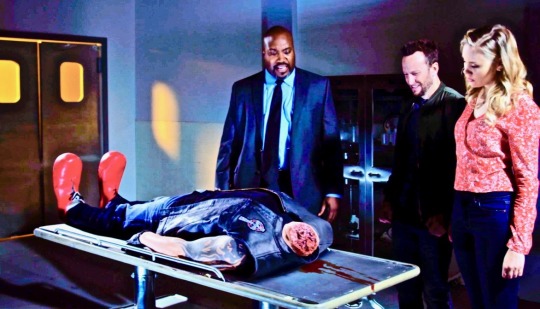
"Eddy Pine (Bodhi Elfman) is a jaded actor dealing with the cancellation of his series," reads the official synopsis. "To complicate matters, he wakes up with the key to the universe stuck up his ass. Apparently an alien Clown Emperor (Verne Troyer) is in hot pursuit of this, as are his rivals, the Green Aliens. Professor von Scheisenberg (French Stewart) and his comely Swedish assistants, the Svenson sisters (Rebecca Forsythe as Helga, Angeline-Rose Troy as Inga), come to Eddy’s aid. If only Eddy hadn’t fallen for Helga, and then the aliens manipulate his mind to confuse her with Inga! And when the mad little Clown Captain (Martin Klebba) steps on the gas and shifts his spaceship into fourth gear, all hell breaks loose.”
We had the opportunity to sit down with Richard to ask him about his movie.
Q. To what do you attribute your enduring interest in clowns? And why do you think they’re so fascinating to people in general?
As I’ve always said: “To be born a male redhead is to be born into a clown suit.” Hence my carrot-topped brother Danny and I have always had a fascination with clowns. Coupled with our wicked sense of humor and a love of the horror genre, it was an easy morph into thoughts of creepy clowns. Just like dolls and puppets—yes, I’m speaking Anabelle—clowns can have something “surreal” about them. Bill Skarsgard’s Pennywise really nails it. And I laughed my head off at Killer Klowns From Outer Space. (And we have honk-honking shit-load of killer clowns in my new film).
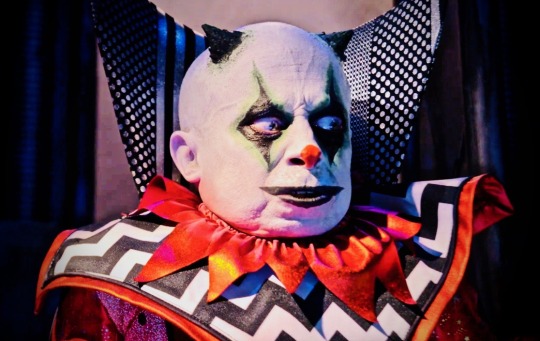
Q. How did the idea for Aliens, Clowns & Geeks come about? Is it similar to The Forbidden Zone?
Joined-at-the-hip. Yes. And no. Forbidden Zone is basically a surrealistic “human-cartoon” set to musical numbers. So I was working on Forbidden Zone 2, a thematic extension of FZ but on a much grander scale. I did a successful crowd-funder to develop the project, then, with the help of my producers, raised about half the budget. They asked me if we could do something quick (and cheaper) in the interim to keep the momentum going.
So I basically locked myself in my roof-top writing garret with a box of cigars and many bottles of whiskey and banged out my Geeks script over the next three weeks.
Geeks is utterly zany and music-driven, but it’s not a “singing musical” so to speak like FZ. It has surrealistic elements, thanks to my insane special effects department--and a little help from Hieronymus Bosch—but I would describe Geeks having cartoony elements rather than being a total “human cartoon” as FZ was…if that makes any sense. (And please don’t try!)

Q. Tell us about the multiple roles played by your family – and do you have role as well? What was it like working with your family – any funny stories?
My son Bodhi Elfman—a serious dramatic actor with 100s of credits--did a great comic turn as Eddy, the lead; a bitter out of work actor who wakes up with the key to the universe stuck up his ass. He also played the ass-kissing clown (literally) on the space ship plus the green alien network executive who orders the destruction of Earth. My wife Anastasia played multiple roles, everything from a nun to a carny slut. She also danced and choreographed the cabaret burlesque numbers as well as played a clown…until she got sick from the chemicals inside the clown mask and had to throw up—after we got the shot, of course--committed trouper that she is. When I met Anastasia she was a ballet dancer with a “day job” at a horror fx shop. She can dance with a broken toe but seems to have developed a sensitivity to certain shop chemicals.
I played a clown as well and almost threw up from laughing. I must say Geeks was a fun show to work on (my greatest joy is creating a sense of fun) and the actors and crew had serious trouble keeping from laughing as I directed in insane clown attire. What a fucking visual!
And brother Danny—what can I say? As an independent (hence lower budget) film maker it helps when your little brother in Mozart.

Q. Tell us how you ran away and joined the circus.
Actually, The Grande Magic Circus--a French musical theatre company. 1971, I was twenty-one, visiting the Festival of New Theatre in Montreal. I ran into a scruffy Parisian street troupe. They had something though, a charisma, an élan, whatever-- it attracted me. Director Jérôme Savary needed a percussionist—et voila, that was me! I persuaded them to give me several minutes onstage at the festival doing my comedy/horror piece set to an Eric Satie’s Gnossienne. When I “killed” the pianist in a pool of blood the audience was shocked. And they loved it!
Then, back in California, I went to see Marcel Carne’s masterpiece Les Enfant de Paradise , a three hour film set in the Paris theatre scene of the 1830’s. I exited the theatre, stopped, turned around and went back in and saw it again.
A few months later I received a letter from Jerome. Peter Brook, famed director of London’s Royal Shakespeare Company was backing the Magic Circus in a large Paris theatre. Would I like to join them? Bloody hell!! Hence, I ran away and joined the “circus.”
Q. Tell us something about your time with the Magic Circus, how it influenced you and also how your brother Danny Elfman joined the show.
I might say that working with Jérôme Savary was perhaps my single greatest influence. The troupe had classically trained actors from the Comedie Francais as well as more Avant guard performers. Jerome was a genius, his material had a sense of Absurdism that really struck me. I would later develop this absurdism in my own fashion. Certainly with my own troupe, the Mystic Knights of the Oingo Boingo (later Oingo Boingo). By the way, my film Forbidden Zone was essentially our Mystic Knights stage show set to film.
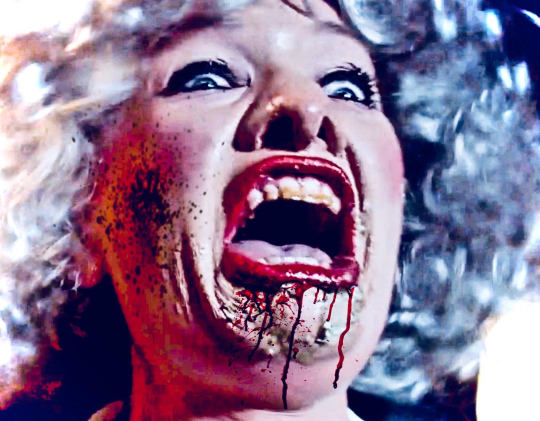
Danny—several days out of high school--showed up at my 5ème, Rue Descartes doorstep with his electric violin. The company violinist was from the Paris Opera. Jerome liked to improvise. The opera guy couldn’t deviate one note from the written score. I believe my brother is Mozart reincarnated. He could follow any improvisation and got the job and toured with us for the summer throughout France. He and I opened the show with him on violin, me on percussion—the first music Danny Elfman ever wrote.
Q. Any other interesting experiences that you and Danny had there?
We were in a Basque town near the Spanish border. If I may digress, I am four years Danny’s senior. I went to a high school in Crenshaw (Boyz in the Hood), Danny ended up at a school with no guns. I was a tough boxer. Danny might be described as a bespectacled science nerd. So it’s Friday night, the audience was really rowdy and restless. My “street sense” knew it was just a matter of time before the fights broke out. We had an Argentine fellow in the troupe, “Katshurro,” nicest fellow. Drunks in the audience picked up on his accent and shouted terrible Spanish insults about his mother. Katshurro stopped mid-performance, his eyes bugging out of head, and he dove right into the audience swinging away. All hell broke loose. Everyone was fighting, sets crashing down. Danny’s glasses got knocked off. Well, and not for the first time, I managed to get Danny out of trouble with both his glasses and violin intact.
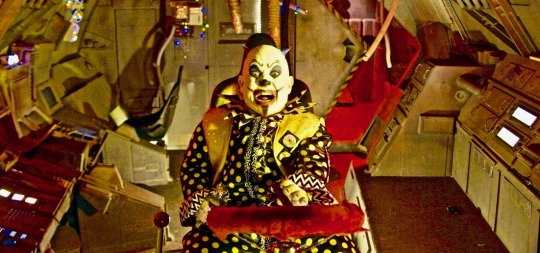
Q. Tell us about the cast you assembled – which includes Verne Troyer in his final screen performance. What was he like? Who does he play in the film?
I really had my dream cast. Along with my son Bodhi we had lovely kung-fu kicking Rebecca Forsythe, versatile Angeline-Rose Troy who not only played Rebecca’s sexy Swedish sister, but donned prosthetics to play poor Eddy’s junkie/whore “Mom from Hell.”
Professor von Scheisenberg was played impeccable veteran French Stewart (Third Rock From the Sun). Another great vet was George Wendt (Cheers) as Father Mahoney. Six foot six comic Steve Agee (Sarah Silverman Show, Guardians of the Galaxy) played both a tough cross-dressing bar owner and a stuttering dufis in a chicken suit. Nic Novicki (Boardwalk Empire) played his nasty little-person boss. I was really blessed with a great ensemble to work with.
And, of course, Verne Troyer, our megalomaniac Clown Emperor. What a wonderful talent to work with! He was funny on set, insisted on doing things in spite of physical limitations and he gave us hilarious comic improvisations. Little body. Big spirit. I will certainly miss him.
Q. The music is by Danny and you also have great animation… please give us some details what it’s like to create worlds through music and manufactured imagery.
Danny, along with my band mate--award winning animation composer Ego Plum (Guerrero)—really gave it to us. Seventy-five minutes of music in a ninety-minute film. ♪ ♫ La, tee-da and a boom boom boom! ♪ ♫ Music is essential to everything I do—especially setting the tone of my films. I even play music before I start writing.
As soon as Danny saw our surrealistic Bosch dream sequence and goofy clown rocket ships he agreed to do the score…after he stopped laughing. I play percussion in a quirky Latin band, Mambo Demonico, led by Hollywood’s top tv animation composer, Ego Plum. He and Danny work with the same people, including Oingo Boingo lead guitarist Steve Bartek, who subsequently has done every one of Danny’s film arrangements. Steve and the original Oingo Boingo members all played on our sound track. I must brag that we do have great fucking music!
You know, Danny was a bespectacled science nerd growing up, basically stayed out of trouble. That was my department. Oddly, he wasn’t really into music. No bands, no concerts, no big music collection. Life is funny how things turned out. I showed him a rough cut of Geeks, he laughed his ass off and offered to do it. Yes, I’m very lucky to have “Mozart” as my little brother!
Q. Who is Aliens, Clowns & Geeks for? Do you think movies like this are more likely to find a mainstream audience?
Forbidden Zone may be a “cult” movie but it still plays all over the world--after forty years. Just this past month FZ played festivals in France and South Korea. Geeks is certainly not for everyone—no one falls in love then dies of cancer. But it will find an audience I am sure. Anyone who had fun with Killer Klowns From Outer Space, liked Rocky Horror, even What We Do in the Shadows in terms of a quirky, wicked sense of humor. I also think it will play well in mental asylums…it certainly shall send people there in any case.
Geeks doesn’t fit into the scheme of “modern films.” Actually, the shooting style and underlying three-act story structure harkens back to classic comedies (says the son of a former English teacher turned novelist). The trappings though, are insane and off-the-wall. You might say it’s just my own, goony creation. Love it or hate it, the humor is balls-out outrageous, definitely not for everyone--no one dies of cancer. Geeks is simply meant to be fun for essentially the genre audience.
Q. What’s your proudest moment associated with making the film?
Proudest moment? Maybe finally paying the actors. People say I’ve embraced the indie spirit. I don’t know how much I “embrace” it, so much as am fucked by it, having to work on such a modest budget. Although I’ve been a “hired gun” and directed scripts written by others, Geeks is really the first time since my 1980 Forbidden Zone that I’ve really done purely my own vision. Per John Waters, well, I’d hope he’d have something strong to drink and/or smoke and then laugh his ass off watching it! That’s what it was like creating the film: Drinking scotch and smoking cigars in my rooftop writing garret, laughing my ass off! The green aliens have a totally high-tech ship, except for the automotive steering wheel and four-on-the-floor to shift gears. For the clowns we went for an absurdly updated version of Flash Gordon. And when our tiny clown emperor takes possession of an earth body, he has little dummy of the earthling sitting in his lap, their heads connected by electrical wires. Absurd and ridiculous, and that’s my middle name.
Want to see a double feature of The Forbidden Zone and Aliens, Clowns & Geeks? You can! They will play at The Regency in L.A. as part of The Valley Film Festival on 1/30/21. Get tickets here.

youtube
Look for our review of Aliens, Clowns & Geeks here soon!
6 notes
·
View notes
Text
Whenever I discuss Sleeping Beauty with someone who doesn’t share my enthusiasm for Disney, they have an irksome tendency to get it muddled with Snow White; their excuse being “it has the same plot”. I’ll admit, there are some surface similarities that even the most casual viewer can pick up on: a fairytale where a princess is forced into unconsciousness and wakes up with some necking, the comic relief and villain being the most beloved characters, a little frolic in the forest with animals, the antagonist plunging off a cliff, you get the idea. In fact, Sleeping Beauty even reuses some discarded story beats from Snow White, mainly our couple dancing on a cloud and the villain capturing the prince to prevent him from waking his princess. Yet despite that, Snow White and Sleeping Beauty are two wholly different movies shaped by the era and talents of the time.
I’ve discussed how Walt Disney was never one to stick to a repeated formula, no matter how successful it was. He must have noticed the parallels between his first movie and this one, but decided to make one crucial change for Sleeping Beauty that would forever differentiate the two: the look. We all know the traditional Disney house style: round, soft shapes, big eyes; charming as it was and still is, Walt was sick of it after several decades. Meanwhile, artists like Mary Blair and Eyvind Earle were producing gorgeous concept art that rarely made a perfect translation into the Disney house style.
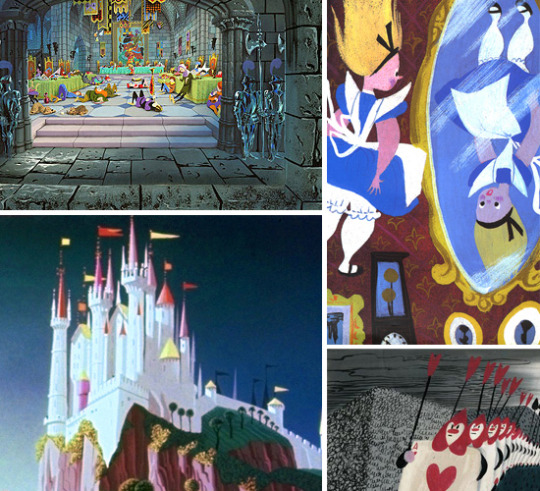
Walt wanted to make a feature that took the pop artistry of their designs and made the animation work for it instead of the other way around – which brings us to another animation studio that was doing well at the time, United Pictures Animation, or UPA.
UPA didn’t have the kind of budget Disney normally had for their animated projects, but what they lacked in fluidity they made up for in style. Watch The Tell-Tale Heart, Gerald McBoing-Boing and Rooty-Toot-Toot to see what I mean. UPA were pioneers of limited animation, taking their scant resources and creating some striking visuals with bold geometric designs. Through this, they defined the look of 50’s animation. Though perhaps unintentional, Sleeping Beauty comes across as Disney’s response to UPA, or what would happen if UPA had the funds they deserved. The characters’ contours are angular but effortlessly graceful, defining their inherent dignity and royalty. And the colors, ohhh the colors…
Because of the immense amount of work required to animate in this difficult new style (and in the Cinemascope ratio, no less) as well as story troubles and Walt barely supervising the animation studio now that he had his hands full with live-action films, television, and a theme park, Sleeping Beauty had a turbulent production that lasted the entirety of the 1950s. For a time, Chuck Jones of Looney Tunes fame was set to direct. Director Wilfred Jackson suffered a heart attack partway through production and Eric Larson, one of the Nine Old Men, took the mantle from there before Walt Disney replaced him Clyde Geronimi. And even after that, Wolfgang Reitherman teamed up with Geronimi as co-director to get the film finished after no less than three delays. Also, Don Bluth got his foot in the door as an assistant animator for this feature, beginning his short-lived but impactful tenure at Disney. Did all this hamper the movie, or did they succeed in what they set out to accomplish?
Well, one of the reasons why this review took so long was because I had a hard time not repeating “MOVIE PRETTY” and “MALEFICENT AWESOME” over and over. Make what you will of that.
The story begins as most fairy tales do with your typical king, Stefan, and his queen suddenly blessed with a baby girl after years of wishing for a child. They christen their daughter Aurora (middle name Borealis, localized entirely within their castle) and throw a huge celebration in her honor. People come from all over the kingdom to pay homage to the princess and OSMKFKSBFHFGILWBHBFC…
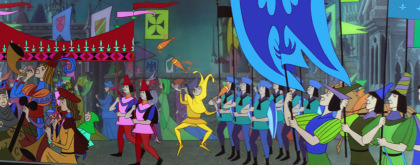
Movie pretty…
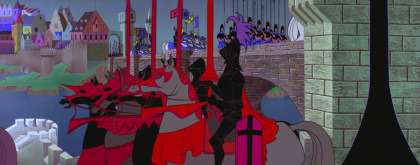
Movie pretty…
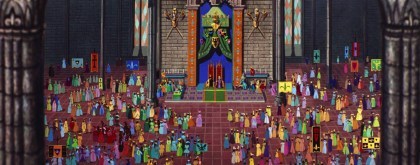
MOVIE PRETTIEEEEEE…
John Hench, Academy Award-winning special effects man and art director, turned Walt on to the idea of basing the look of Sleeping Beauty on classic medieval artwork. Thanks to him and Eyvind Earle’s insanely detailed designs and backgrounds, this is one of Disney’s most visually distinct and beautiful films. A single still from this feature wouldn’t feel out of place up in The Cloisters.
Among the party guests is King Stefan’s old friend King Hubert (Bill Thompson) bringing his young son Prince Philip. Stefan and Hubert wish to unite their two kingdoms and formally announce Philip’s betrothal to the infant Aurora.

“We were going to do it during the second trimester, but we decided to wait until she was more mature.”
By the way, your eyes are not deceiving you. That is Aurora’s mother, Queen Leah, alive and well and named. And frabjous day calloo callay, she even gets some lines! The most common joke about Disney princesses is that they don’t have moms (even Ralph Breaks The Internet went out of its way to highlight that), so as a hardcore Disney fan who often has to put up with this generalization, Leah’s existence leaves me feeling vindicated.
Once that happy revelation is out of the way, we’re introduced to our main protagonists.
Oh, you thought I was referring to Philip and Aurora? Nonononono, my friends. THESE are the true heroes of Sleeping Beauty, the Three Good Fairies.

The fairies started off as one-note side characters sharing the same personality. Think pre-Ducktales-reboot Huey, Dewey, and Louie in dresses. But the studio had a difficult time giving Aurora more depth and was having a lot more fun developing the fairies. Naturally, they became so fascinating and appealing that more screentime was given over to them. Now the story’s carried by three wonderfully fleshed out ladies who are distinct in both looks and personality: Flora’s the pragmatic tradition-adhering leader, Fauna’s the sweet scatterbrain who mediates, and Merryweather’s the feisty young upstart.
With the plot now focused on characters who held a traditionally minor role, it’s easy to read this as a perspective-flipped version of the fairytale, but there’s more to it than that. Remember in my Clash of the Titans review how I mentioned the gods literally play chess using the heroes as pieces? I tend to view the main conflict of Sleeping Beauty in the same way. The Three Fairies and Maleficent are in a constant game of good vs. evil, moving Aurora, Philip, and the rest of the royals as pawns in their plans. There’s plenty of plotting and intrigue, with both sides constantly guessing and second-guessing the other’s next maneuver, and even if you’re already familiar with the story’s trajectory you’re still left on the edge of your seat as it inches towards the fiery climax.
And dare I say it but…the fairies and their power dynamic make this Disney’s most feminist film. Yes, really. You could argue that some of the other animated movies from the Renaissance and Revival period have more notable, stronger female protagonists, and many of the live-action remakes try to be woke without really grasping the concept, but consider this: The cast of Sleeping Beauty is mostly female, the leads aren’t objectified in any manner (that is if you count Aurora as a supporting character), nor does their gender factor into their competency, each one differs in age and body type, and most of them are working together towards a common goal as opposed to against each other. Name a movie in the past decade that does the same and still manages to be entertaining (no, really, I’d love to see it). There’s even one scene that unintentionally provides great commentary on the divides in the feminist movement, but more on that later.
Flora and Fauna bless the baby with beauty and song respectively which are accompanied by a short chorus and some sumptuous graphics. I don’t think I need to reiterate that when this movie goes extra with the visuals, it GOES EXTRA with the visuals. Next comes Merryweather with her gift. To this day, no one knows what Merryweather intended to give Aurora. Flora’s the most traditionally feminine of the three so her giving Aurora beauty comes as no surprise. By comparison, Merryweather is the most forward (or unconventional, depending on your point of view). I wouldn’t put it past her to favor Aurora with intelligence, or humor, or passion, or creativity or humility or confidence or decisiveness or physical fitness or great swordsmanship or telekinesis or ice powers or one million YouTube subscribers or comfort in her female sexuality.
Me personally, I think I’ve got the best gift of all:
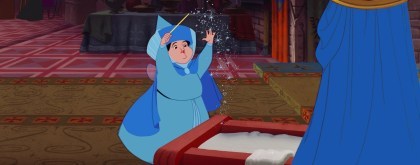
“O Princess, my gift shall be…getting all reviews posted on time for once!”
Alas, before Merryweather can bestow such a wondrous quality upon the child, she’s interrupted by a horny party crasher.
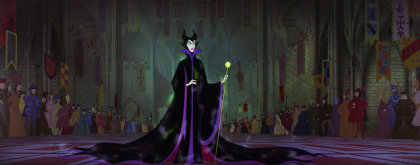
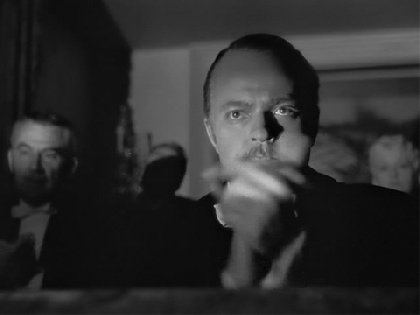
Maleficent. The Mistress of All Evil. Chernabog’s right-hand witch. The Disney villain all Disney villains strive to be. She has it all – the looks, the poise, the power, the laugh, the cunning, the ruthlessness! She doesn’t even need to sing a song because she’s already awesome enough without one. Marc Davis’ gothic design cuts a fine figure and Eleanor Audley’s subtle icy voicework is trés magnifique. As much as I enjoy Audley as Cinderella’s evil stepmother, Lady Tremaine was but an appetizer in comparison to the four-course banquet of pure villainy that is Maleficent.
This leads to a small point of contention some viewers have with Maleficent in spite of hitting top marks elsewhere: her motivation. Putting a hit out on a child for not getting invited to a measly party? Not exactly compelling, is it? And yes, it isn’t a deep motive…is what I would say if I wasn’t well-versed in folkloric tradition. In the original fairy tale and the movie (though it isn’t outright stated in the latter), the party for Aurora isn’t just your average royal kegger, it’s a christening. Back in ye olden days, christenings were very big deals. To not receive an invitation to one was a grave insult, so not extending an invite to your semi-omnipotent magical neighbor is just asking for trouble. In the fairy tale’s defense, no one had seen the evil fairy for years and assumed she was dead, though I can’t imagine how nobody thought Maleficent wouldn’t find about it eventually.

“You dare to deny me, foolish mortals? Very well, then! I shall have my own christening! With blackjack! And strumpets!”
Maleficent is proof that sometimes you don’t have to have an elaborate backstory, a god complex, a tragic past or the unfortunate luck to be on the wrong side of a conflict. Sometimes all you need is some magic, brains, class, and a whole lot of flair to be a perfect, intimidating, and unquestionably iconic villain.
Basically what I’m saying is these movies never happened. Got it?
Maleficent is disarmingly polite over being snubbed, even after Merryweather bluntly tells her nobody wanted her to come. She even brought her own gift for the baby – sixteen years of life cut short by the prick of a spinning wheel spindle, because why change into a dragon and destroy everyone all at once when you can draw the torture out over an agonizingly long time and deliver the coup de grace in the prime of a young woman’s life? That’s how Maleficent rolls, baby. She could dole out capital punishment when she has to without batting an eyelid, but causing human suffering is her bread and butter.
Stefan begs the fairies to undo Maleficent’s curse, but it’s too strong for them. Flora and Fauna insist, however, that Merryweather can use her gift to lessen the spell’s potency. Now instead of dying from that fatal prick, Aurora will sleep until she receives True Love’s Kiss™. Stefan’s not one to throw caution to the wind though, so he orders all of the kingdom’s spinning wheels to be burned in the meantime.

I just pray his kingdom’s economy wasn’t based on textiles otherwise they’re screwed.
As the peasantry celebrates Guy Fawkes Day several centuries early, the fairies ponder their next move. They’ve been around long enough to know that removing spinning wheels from the equation won’t put a damper on Maleficent’s scheme. This scene is incredibly effective in establishing two things:
Maleficent’s near-omniscient presence in the film
How well the fairies’ differing personalities play off each other
Maleficent rarely miscalculates her opponents, and that guile puts her one step ahead of the heroes, making her one of the few Disney villains to nearly reach their goal. The only mistake she makes in the entire movie is trusting her henchmen to do their jobs when she isn’t directly supervising them, though that’s more on them than her. The different methods the fairies propose to deal with Maleficent fantastically illustrate what kind of people they are. Fauna believes she’s just a miserable soul who could be reasoned with if they talk things over. Merryweather would rather take the fight to Maleficent and turn her into a toad. Flora, however, is wise enough to know Maleficent’s too wicked to plead to, too clever to bargain with and too strong to face head-on, so their best course of action is to focus on protecting Aurora through any means necessary. Her initial idea is to enchant the princess into a flower (her namesake is her specialty, after all), but Merryweather reminds her that Maleficent enjoys creating bitter frosts just to kill her flowers.
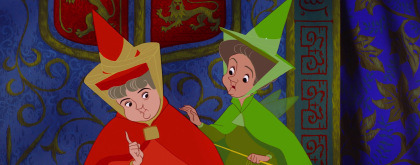
“Well we could try that but stick her in a castle with a beast for a while…nah, that’ll never work.”
Yet never one to give up, Flora alters the plan so they’ll raise Aurora as a peasant girl out in the woods. This means disguising themselves as humans and giving up magic for sixteen years so as to not attract Maleficent, but that amount of time is like twenty minutes to the fair folk. Stefan and Leah reluctantly agree to the plan, and the fairies spirit little Aurora away from the castle that very night.
Sixteen years later, Maleficent is infuriated that her minions have failed to locate Aurora, even more so when one reveals that they’ve spent the whole time looking for a baby instead of a maturing woman. In an interview with the Rotoscopers podcast, Don Bluth called Maleficent a very flat antagonist because she surrounds lackeys dumber than her so she could be the smart one among them and, again, her supposed lack of motivation. But come on, let’s not entirely condemn the bad guys for having too much faith in their underlings. It’s difficult to find minions smart enough to carry out orders but dumb enough to stay unquestioningly loyal. Usually you have to register as Republican in order to get some.
Maleficent gets her anger out in the most therapeutic way – throwing lightning bolts at her orcs, awesome – then leaves the job of finding Aurora up to her trusty raven Diablo. We then finally see the grown-up Aurora herself, whom the fairies renamed Briar Rose as a nod to the Brothers Grimm version of this tale.
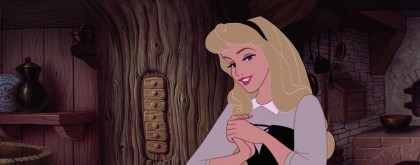
I know I’ve made the occasional case for the princesses from Walt’s era compared to the present day, and yet I have a hard time defending how…I don’t want to say bland. Bland would mean there’s nothing interesting about Aurora, and that’s a lie. She’s gorgeously designed and drawn, and even in her peasant dress she has an air of elegance and sophistication. She carries herself like a queen; her innate royalty reveals itself in her graceful movements. Mary Costa also gifts her with an excellent set of pipes. Hearing her song echoing through the forest is nothing short of magical. She’s a flower child who can talk to animals. She has dreams of escaping her adopted aunts’ loving but stifling care and being allowed to grow up, see the world, actually talk to people, and even find a life partner. She has some strong potential. It’s not that Aurora’s boring, she’s just not quite as developed as we’ve come to expect our animated female protagonists to be. I’m grateful for what we’ve got, but I only wish we could have more. What was her childhood like? How did she learn to communicate with animals? When did the fairies trust her enough to let her spend time out on her own? Did the fairies ever subtly teach her lessons in royalty through lessons and games? Heck, nobody bothers to keep her informed about Maleficent or her curse, and they act surprised when she’s shocked to learn she was a princess the whole time. I want to see what Aurora could have been like if she had known the truth already and what kind of steps she would take to defend herself. Blame the source material for this; it’s difficult to write a compelling main character when she’s supposed to sleep through most of her story.
The fairies send Aurora on a fetch quest so they can plan a surprise birthday party for her. Merryweather wants to bring their magic wands back out for the job, but Flora insists on taking no chances now that they’re in the home stretch. Fauna gets to live her dream of baking an elaborate cake (it’s thanks to her referring to a teaspoon as a “tsp” that I do it too), and Flora insists on making Aurora a gown fit for a princess using Merryweather as a dummy. And we also get one of the best burns in the Disney canon:
Merryweather: It looks awful!
Flora: That’s because it’s on you, dear.
youtube
The fairies fall into reminiscing over raising Aurora and get teary over having to let her go soon. I see where they’re coming from, they’re the ones who raised her for sixteen years. They must have so many fond memories, not to mention they put all that work into learning to properly raise a child let alone live like normal human beings seeing how two of them still can’t sew or cook without magic. I wonder what that was like –
No, NO, you CGI abominations DO NOT exist! Go back to the fires from whence you came!!
“Ugh, I’m gonna need something strong to expunge that from my eyes.”
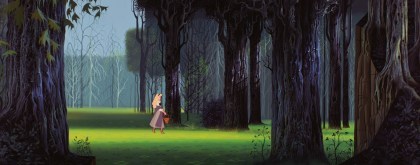
There we go.
Aurora wanders through the forest, drawing out the usual bevy of cute woodland critters with her singing. She also catches the attention of a grown-up Prince Philip (Billy Shirley) who’s more dashing and considerably less blonde than he was sixteen years ago.
By this point, the Disney animators were far more confident in their ability to draw realistic but expressive leading men, hence Philip’s expanded role from the story. He’s also the first Disney prince to have a personality; not a terribly deep or defined one, but it’s a step up from his nameless plot-device predecessors. There are some signs of him being a hopeless romantic, he gets a few funny lines here and there, has a sturdy friendship with his horse Samson, and is fiercely determined when it’s time to kick some ass. He does have the same problem as Aurora in he randomly decides to stop talking for the rest of the movie once he reaches the midway mark (at least Aurora has the excuse that she’s sleeping for that remainder), but I suppose you could chalk this up as to him wanting to spite Maleficent with his silence.
The animals steal some of Philip’s clothes so they can pretend to be Aurora’s dream prince. Aurora plays along as she sings the movie’s standout song, “Once Upon a Dream”. Philip and Samson watch until he smooths his way into the dance. Once Aurora discovers the switch, Philip gets a little too up in her personal space for my liking, constantly grabbing her hand so she doesn’t run off and pulling her closer to him. Not as horrible as what the prince does to the sleeping princess in the original story (a questionably consensual kiss is a trifle compared to how the scumbag of a prince treats her there), but still a bit iffy.
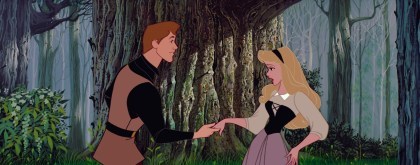
“It’s a good thing my aunts taught me to never go anywhere without a loaded pistol taped to my back.”
But once Philip backs off a little and joins in her song, they both dance together and OEHSGBJSGBLL…

I think I’m going to need surgery to get my jaw off the floor back into its proper place thanks to this movie.
As per Disney tradition, Aurora and Philip’s waltz means the two are head over heels in love with each other. But when it comes time to finally exchange names, Aurora panics and runs away, though she sticks around long enough to tell Philip to meet her family at the cottage that evening.
Back at home, the party preparations aren’t proceeding as planned. Flora’s dress looks as good as my attempts at dressmaking, and Fauna’s dessert wouldn’t feel out of place on Cake Wrecks.
A fed-up Merryweather reads Flora and Fauna the riot act and convinces them to finally take up their wands again. This produces more desirable results, though Merryweather still gets stuck with cleanup duty.
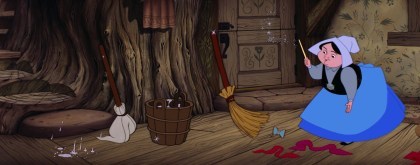
Enchanting a broom to come to life and do your dirty work? I don’t see this going wrong in any possible way.
Things start to go south when Flora and Merryweather argue over the dress color and it escalates into a full-blown wizard’s duel. This gag was supposedly based on the animators’ arguments over what was Aurora’s proper dress color. I think they should have compromised and combined both colors to make purple, which would go lovely with Aurora’s violet eyes, but what do I know. I’m just the illustration major writing a blog. Unfortunately, while the fairies remembered to cover every door, window, and crack that could expose their magic, they overlooked the fireplace. The sparkly residue of Flora and Merryweather’s fight fly up the chimney, alerting Diablo to their hideaway.
Going back to what I said earlier about this movie providing some commentary on feminism, consider this: Flora is obsessed with pink, a traditionally female color, and she gives Aurora an attribute that is oft preferred in a woman but not the most important quality, beauty. Merryweather, on the other hand, is all about blue, a color usually geared towards boys, and she has much more common sense and practicality about her. Though Merryweather and Flora are able to put aside their differences in personalities and approaches for a common goal, it’s when they refuse to compromise and begin prioritizing which color – ie. which ideology and extension of themselves – that they want Aurora to step into that they lose sight of what’s important, and allow everything they worked for to collapse on itself. It’s played for laughs very well, sure, but if not’s symbolic of the dichotomy between traditional femininity and modern sensibility that tears apart the feminist movement then I don’t know what is.
The fairies manage to fix their messes in time for Aurora’s return. She’s thrilled with their gifts but shocks them all when she announces her new boyfriend is coming over for dinner. They come clean about her heritage and betrothal to Prince Philip, and Aurora runs up to her room in tears over the fact that she’ll never see her one true love again. That and her entire life has been a lie and she’s being carted off to meet parents she knows nothing about to marry a man she’s never met and rule an entire kingdom with no prior experience or knowledge. But mostly the true love thing.
Meanwhile, Stefan and Hubert are making wedding plans over wine with “Skumps”, the preferred toast between me and my friends. Also adding to the humor is a minstrel who keeps stealing sips until he literally drinks himself under the table.
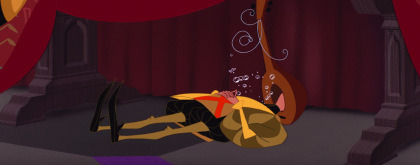
This was also his way of getting through the Black Plague, co-opted by the rest of the world six hundred years later.
Philip returns and Hubert goes to greet him. He thinks his son is thrilled at the prospect of marrying Aurora but is disappointed to learn that he’s fallen for an anonymous peasant.
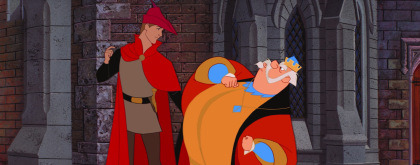
“At least tell me if she’s royalty in disguise so you don’t elope to Sicily!”
Philip rides back into the woods for his big date, leaving Hubert with the unenviable task of breaking the bad news to Stefan. As for Aurora, the fairies smuggle her into the castle and prep her for her homecoming. She’s still blue over having to ghost her forest hubby though, so the fairies give her some time to herself.
Biiiiiiiiig mistake.
So imagine you’re me, growing up watching this movie on tape on a television set with a very standard but not spectacular sound system. Then years later you download the remastered soundtrack and give it a listen while you’re falling asleep. You’ve got the whole score memorized, the volume is nice and low, it’s all good.
And then, just as you’re drifting off, you hear a ghostly voice singing in your ear “Auroraaa…Auroraaaaa…”

That reminds me, I haven’t had a chance to talk about the music yet, haven’t I? Forgive me for waiting so long to do so but my reaction to it is equivalent to the visuals. The score is taken straight from the Sleeping Beauty ballet by Tchaikovsky, the same composer as The Nutcracker, and it is lush, sweeping, sumptuous, just…

While George Bruns was mostly faithful with how the score was represented within the context of the ballet, at certain points he took the same approach as The Nutcracker Prince and rearranged the music order to underscore totally different scenes to staggering effect. The beautifully ominous music where Maleficent appears as a ball of green flame and leads the hypnotized Aurora to her doom? It’s from one of the ballet’s divertissements where Puss in Boots dances with his girlfriend. But tell me which is more fitting for a musical composition such as this – two cats pirouetting around each other in a crowded ballroom, or eerie pitch-black spiral staircases illuminated by green fire as a cursed princess inches closer to her dark destiny against her will?
youtube
The fairies realize their error and frantically search the maze of secret passages for Aurora. Though the princess resists Maleficent’s commands for only a moment, they are still too late to save her from fulfilling the curse. Maleficent gloats and leaves the fairies to wallow in their failure. It’s made even worse as the merrymaking from the oblivious revelers below ring out while they put Aurora to bed in a tower and mourn over her. It’s heartbreaking: they raised and loved her as if she were their own daughter, and they still couldn’t protect her. Everyone talks about “Baby Mine” and Bambi’s mom as huge tearjerkers, but why is this scene constantly forgotten?
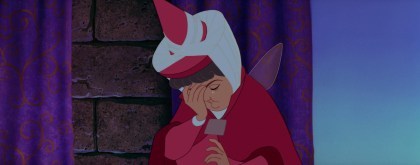
Stupid onions, stupid stupid onions…
Fauna and Merryweather can’t even begin to imagine how heartbroken Stefan and Leah will be, but Flora has a solution: put the kingdom to sleep along with Aurora until she is woken up. I understand her wanting to spare Aurora’s family some pain, but conking out an entire principality for god knows how long to cover up their failure? AND at a time when Europe was all about invading and conquering itself? Are we sure this isn’t just part of Maleficent’s overarching plan for revenge? This sounds more like something she would come up with instead of the leader of the good guys.
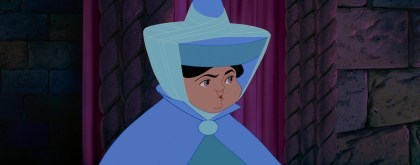
“So what happens if one of the neighboring kingdoms decides to attack while everyone’s sleeping?”
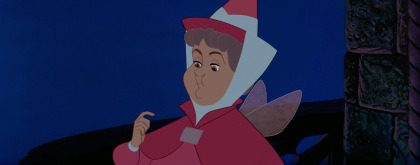
“Then we’ll put them and their armies to sleep, too.”

“And once Aurora is saved, both kingdoms will immediately wake up to find themselves thrust into a war they’re barely prepared for, is that correct?”

“Oh, you’re right, that’s a terrible idea.”

“Finally, thank you.”

“I’ll just turn them all into flowers.”

“THAT’S NOT AN OPTION!!!”
The fairies flitter about the castle grounds spreading their spell over the unwitting royal court, even putting the candles and sconces out. We have another reprise of the “Gifts of Beauty and Song” chorus now altered to sound like a lullaby, providing an interesting bit of symmetry between it and its earlier use in the film. Whereas it first underscored their blessings upon Aurora, now it plays as the fairies are giving the “gift” of sleep to the entire castle.
While Flora knocks out the throne room, she overhears Hubert muttering about Philip eloping with a peasant girl and she makes the connection. The fairies speed to the cottage just as Philip arrives there. But once again Maleficent beats them to the punch. Her goons ambush Philip and she watches them wrestle and bond him with fiendish glee.

You magnificent, kinky bitch.
Maleficent was only out to capture the one man who could break Aurora’s curse; the fact that he’s really the son of her nemesis’ allies is just icing on the cake. Flora, Fauna, and Merryweather resolve to rescue him from Maleficent’s fortress in the Forbidden Mountain.
Some movies reach the brink of greatness only to falter when it comes to the final act. Sleeping Beauty is not one of them. Everything that happens from the moment we slowly zoom in through the purple mist on to the Forbidden Mountain itself up until the storybook closes is perfection. The perfectly paced action, the animation, the music, Maleficent’s hideaway in all its decaying glory (I swear it’s like Jean Cocteau meets Frank Frazetta meets Giotto) all make for the climax of climaxes.
The fairies shrink to insect size and silently sneak through Maleficent’s creepy domain, narrowly running into guards and gargoyles at every turn. They traverse the stronghold until they find her overseeing a hellish bacchanalia in honor of her supposed victory.
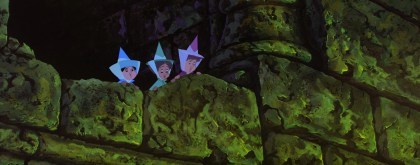
“My old gaffer would have a thing or two to say if he could see us now.”
Soon Maleficent gets bored and goes to “cheer up” her captive. Then we have it: The Moment.
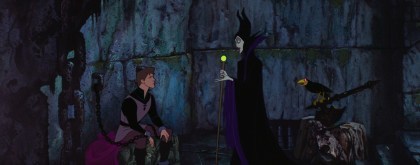
I’ve talked about this before, that one small, devious step further the villain takes to make themselves more heinous in our eyes. It’s the Wicked Witch taunting Dorothy with visions of Aunt Em. It’s the Beldam hanging Other Wybie’s remains. It’s virtually everything Heath Ledger’s Joker does. And it is this simple scene where Maleficent details what she plans to do with Philip. She spins “a charming fairy tale come true” of Aurora sleeping without aging, waiting for her prince to come to wake her. And Philip will escape the dungeon, ride to her rescue and prove true love conquers all – in one hundred years, when he’s a broken old husk of a man on the brink of death. DAMN. If you want to know why Maleficent is considered the best of all the Disney villains, it’s not just all her previously praised qualities, it’s her sheer sadism and the pleasure she takes in it.
The fairies enter and free Philip once Maleficent departs. The course of true love never runs smoothly though, so they arm him with the Shield of Virtue (licensed by Carefree Maxi-Pads), and the Sword of Truth to aid in his escape.
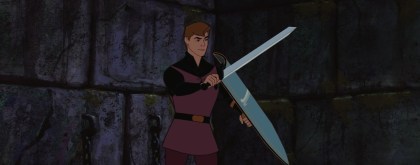
“So, why’s it called the Sword of Truth?”
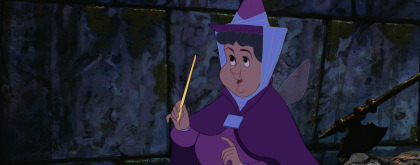
“Anyone who’s subjected to it speaks only the truth…as they bleed out and die, of course.”

“Cool, cool. On an unrelated note, I think I’m gonna go to DC for my honeymoon.”
Diablo sounds the alarm and the Battle With the Forces of Evil kicks off with Philip slashing his Sword of Truth through Maleficent’s goons.
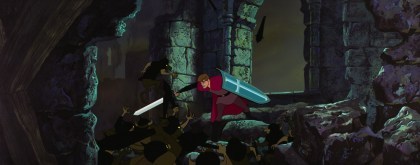
“I steal lunches from the break room fridge!” “I broke wind last Tuesday and blamed it on the dog!” “I cried like a little girl during The Good Place finale!” “I only wash my hands for NINETEEN seconds at a time!”
Philip makes his getaway on Samson and the music reaches truly operatic levels as Maleficent does everything in her power to end him. Yet Philip soldiers through it like a boss. Crumbling mountainsides, Maleficent hurling lightning from the sky and summoning a forest of thorns to block the way? Fuck that shit, he’s gotta go save his girl.
Then, as Philip cuts his way through the briars, Maleficent looks at her watch, realizes it’s No More Fucking Around O’Clock, zooms over to the castle, throws down the most intimidating challenge ever –

“Now you shall deal with me, O Prince, and all the powers of HELL!!”
– and with that, she takes her final form: a massive fire-breathing dragon.
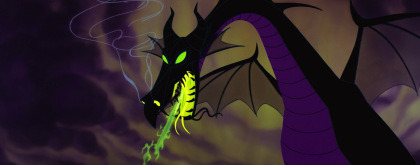

Every Disney villain who’s gone kaiju in the final act owes everything to this gorgeous terrifying beast. The dragon is an awe-inspiring unholy fusion of style, power and darkness. There’s a reason why she’s the final boss in Fantasmic; the chance to watch a live dragon battle is too cool to pass up.
Speaking of battles, Maleficent’s dragon form was animated by Woolie Reitherman, who previously brought us such gargantuan monster clashes as the T-rex brawl in Fantasia and the escape from Monstro The Whale in Pinocchio. And when you have a dragon confronting a fairytale prince, well, you know what’s coming.

Maleficent backs Philip on to a cliff surrounded by flames, leaving him only one desperate shot. With a little extra magic from the fairies, he throws his Sword of Truth at Maleficent and it plunges right into her heart.
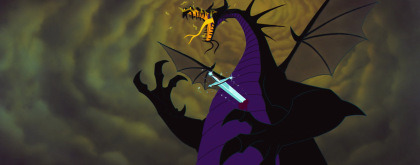
“I liked…Frozen 2…more than the first one…”
Maleficent’s spells die with her, clearing the way for Philip. He gives Aurora that wake-up smooch and everyone in the castle slowly rouses, owing their inexplicable simultaneous twenty-minute blackout to the unusually strong wine.
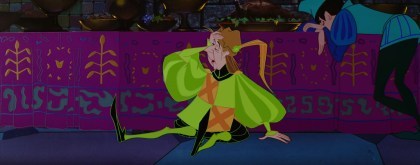
He can attest to that fact.
The royal families are happily reunited, and the film ends on Flora and Merryweather fighting over Aurora’s dress color yet again as she and Philip waltz together on the clouds using animation Beauty and the Beast would borrow thirty-two years later.
Sleeping Beauty is a movie I can never have on in the background because the moment I look up from my work I am spellbound by it. Do I need to elaborate on how this is one of the most beautiful looking and sounding movies Disney’s ever produced? Sleeping Beauty is the swan song of Disney’s first golden age of animation. For better or for worse, their animation process would switch to the rough, cost-cutting Xerox process starting with their next feature, 101 Dalmatians, and few films would reach Sleeping Beauty’s level of gorgeousness ever since.
Though a massive financial and critical hit on release, it wasn’t enough to make up for the monstrous production costs, not unlike Fantasia. Thankfully, home video sales revived interest and made it Sleeping Beauty of the top-selling VHS tapes of the decade, cementing it as a bonafide classic. It’s one of my favorites from Disney for its stunning visuals, gorgeous music, phenomenal villain and overlooked but great cast characters. Revisit it if you haven’t already.
Thank you for reading! If you enjoyed this review, please consider supporting this misfit on Patreon. Patreon supporters receive great perks such as extra votes for movie reviews, movie requests, early sneak-peeks and more! Special thanks to Amelia Jones, Gordhan Rajani and Sam Minden for their contributions!
Artwork by Charles Moss.
Screencaps from animationscreencaps.com
March Review: Sleeping Beauty (1959) Whenever I discuss Sleeping Beauty with someone who doesn't share my enthusiasm for Disney, they have an irksome tendency to get it muddled with Snow White; their excuse being "it has the same plot".
#2D animation#angelina jolie#animated#animated feature#animated movie#animated movie review#animated musical#animation#animator#animators#anthropomorphic animal#aurora#ballet#barbara luddy#battle#battle to end all battles#battle with the forces of evil#bill shirley#bill thompson#blue#briar rose#cake#charles perrault#classic disney#curse#diablo#Disney#disney animated#disney animated feature#disney animated movie
29 notes
·
View notes
Text
Haven DVD Commentaries: 5.08 - Exposure
Commentary with Nick Parker (writer for this episode) and Brian Millikin (writer for 5.07)
In which the writers discuss various aspects of the episode including, Mara and Duke, Vince and Dave, the Trouble of the week, production and writing challenges, and Duke’s backstory with regards to his mom.
Content warning for discussion of alcoholism.
[They talk about how a lot of the episodes this season function almost as two-parters, including 5.07 and 5.08 and how the two of them worked together to make sure these two episodes fit together well.]
BM: We broke these two episodes on the board side by side and the outlines and scripts went out together. That was the way we did it this season, both for production reasons, because to help us save time we shot two episodes together in block shooting, and also it kind of helped up to ever so slightly change up the pace and story telling of the show a little bit. Keep it a little fresher in this super-sized fifth season.
[They talk about how happy they are with the director for these two episodes and how they turned out; “Nice, dark, moody.”]
NP: Some of the most fun scenes to write were between Duke and Mara here where she’s chained up, but she is the one that’s in control.
BM: I love it. I think she’s so good as Mara. Look at this, just leaning into Duke’s face and just trying to work him at all times. She was great. They basically spent two full days doing all of these scenes in the hold of the boat. So Emily sat in this chair, literally chained to it (she had to be unchained to get out of the chair) for two days, and Eric just came in and out. And Lucas is in there a couple times as ghost Nathan but that’s it. And I think, she’s never been better. She’s been just as good, but never better.
NP: Yeah, these were super fun to write and then when we started to get the dailies in they were even more fun to watch because they did such a good job in these scenes. And what’s fun about 5.08 is the task of this episode was partly to tell an important Duke story but also to draw them closer together for where they’re going in episodes 9, 10, 11, 12. And starting to elevate their story. And in these scenes Duke starts to see a little bit of, maybe a kindred spirit, or he sees something in Mara that he respects if not likes.
BM: And of course the question to be asking is, is that real what he’s seeing? Or is she putting on a show for him? Is she trying to draw him closer, or is it legitimate? Which is a question you’re asking all the way up until 5.13, when … spoilers.
NP: Yeah, and also, what she asked him for there, she says she wants the Crocker Journal at first but then that’s not really what she wants. It’s about getting the story about Duke’s mother. Which is something we’ve never heard about, Duke has never talked about his mother. We’ve heard him drone on and one about his father who we’ve even seen in the past (episode 2.12, back in the day) but never heard tale of his mother. Which was an important thing.
BM: It’s funny, I know big fans of Nathan groused a little bit because we once again are dealing with a story about Duke’s history and we get comparatively little about Nathan’s past. I think, they’re not wrong. It’s just kind of the way it worked out. The first season of the show was so much about Nathan and his dad - his dad was a regular on the show. And about the loss of his father and the aftermath of that. And we set up that his mom was gone from an early age and we learn a little bit about that in season 5b. But it was just the way of things that is just worked out that Duke’s history just kept coming up in ways that were more organic to the story. But never more so than this episode. I think it’s my favourite part of the episode.
NP: It was my favourite part to write, outside of some lines from a character who’s going to be introduced very shortly [Seth], a returning character from an episode I wrote in season 4, 4.11 - Shot in the Dark.
BM: Now, Audrey and Duke here are both in the same wardrobe that they were in the previous episode. But we imagine this is the next day, we imagine a work-all-night situation. I think you kind of get that a little bit with Mara’s cut being a bit more healed. But it made sense that they’d be in the same clothes from working all night - if they know that Nathan’s out there and they need to save him, are they really going to go home, take a shower, change clothes?
[Nick comments on the Ghost Busters reference as Duke calls Seth and both of them laugh as Seth appears on screen, and comment how good Kris Lemche is in the role.]
NP: Seth is named after my brother.
BM: Kris is fantastic.
NP: He’s great. He was such a delight on set and everything. The cast and crew liked working with him so much. He also brings shot of energy into everything.
BM: Absolutely. He’s just a different kind of voice than we have in the show a lot. Especially without Jennifer who was a little bit of that outsider commentary. But I just love him. That scene in the script was exactly as written; cut to the inside of the van and a mountain of dirty clothes and cheetos and then you see hair like a shark fin pop up.
NP: Which is basically a description of my bedroom and how I wake up every morning.
BM: Absolutely.
[Vince and Dave in the hospital] NP: Ah here they’re playing Gin Rummy, which is a game I used to play with my grandfather all the time, before he passed away, and yeah I just thought it would be a great game for two old men - I imagine all old men play Gin Rummy, that’s just how they go through life.
BM: Well this is the third time I think we’ve seen them play a different game together. It’s king of a motiv for Vince and Dave that we find them in the middle of playing something. I like it, it speaks to them a little bit.
NP: Yeah and I kind of wanted to have them in a little bit of a different space in this episode. Seasons one and two especially, Vince and Dave were comic relief.
BM: Absolutely.
NP: We’d go to them and we’d have some nice back and forth, and bickering and banter, and it was a nice change of pace. But as things got darker and Vince revealed who he really is and Dave’s revelation about him being adopted, things got darker and I enjoyed being able to write them in a little bit of a lighter way. Which happens in this scene a little bit and then more so later in the episode.
BM: Yeah and they also were not in the previous episode. These guys have never been in every single episode in a given season, but I think we had them so much in the previous episodes that they’re absence was felt in the last one so we were happy to have them back.
[Both of them laughing as Seth appears on screen again.]
NP: That was also a nice thing about Seth. There’s kind of timelessness about Haven in some ways. We know when it’s set, but it feels kind of timeless because it’s the quaint small town and everything. And to be able to have Seth come in and make some strange pop culture references is always fun.
BM: Yeah. We don’t typically have ton of pop culture references, so when we do it it stands out pretty well, like the Groundhog Day joke from a couple seasons past. But yeah you just get away with it with Kris Lemche.
NP: Well luckily he sells it so well I can just be silly. And it’s fun.
BM: It was great. I don’t remember when it was that we came up with the idea of bringing him in for this episode, but I think it was after we had settled on the idea of the ‘ghost’ Trouble. And then we knew that episode 7 was going to have All The Bad Things, and then episode 8 was going to be; now we actually have to solve the thing. And even you and I were like; how are we going to do that? And I think it was someone else who suggested, what they need is to try to find a way to reach out to Nathan and we’ve had one other episode where we’ve had devices that do that kind of stuff. And I remember someone was like; Come on, we can’t do a ghostbustery thing. And I was like; Well if you think about it, Nathan is the victim of a Trouble which means it’s caused by aether which means there’s a kind of residual aether quality to it, so of course it would work.
NP: It was a conversation I was having with our excellent leader Gabrielle Stanton, where she was saying; We’ve been looking for a time to work Kris back in, they want to have him back up there and this could be a good time to do it. And I jumped all over the idea of writing him again, because he was just so much fun to work with.
BM: Yeah, it’s funny, it’s a little bit like with William who shows up again in season 5b and so Seth, and they were just characters we really liked and actors we really liked in the role. And whenever we have a chance to, it’s something we’ve always tried to do, is bring people back. It helps to flesh out the world and make it feel a bit more real.
NP: Absolutely. Living in the reality of the way things are. And though William is a transdimensional character from another world, he still brings - he jokes about the situations there’re in, he points out the ridiculousness of where they are, which is something that Seth does as well. So that’s always nice to incorporate whenever we can. And also necessary to just lighten things. I mean Audrey is now talking to her ghost boyfriend in a desperate attempt to bring him back; it’s pretty heavy.
BM. Yep. But this episode establishes Seth as a solid recurring character in our world, right along the lines of Marion from the pilot, Agent Howard, Stan, all the other people who have come to have a real role to play and I’m happy that he’s part of the club.
NP: The bourbon Duke and Mara are drinking here, Gunslinger Standard, we named that for a Stephen King reference. Gunslinger is a reference to Roland Deschain from the Gunslinger. And now they are just going to drink, and drink, and drink.
BM: I love his glassware.
NP: It’s pretty classy. I love how Duke is like; I’m going to have to tell this story so I’m going to have to be drunk, and the first thing he does is drink about three shots of bourbon in one go.
BM: We joked about it internally and maybe we should stop joking because maybe it’s a serious problem that Duke has; he might be an alcoholic. We joked about having a drinking game; what if you just drank whenever Duke drinks. If you were to watch a couple episodes in a row, you would be hammered.
NP: Yes. Luckily Eric Balfour is drinking sweet tea.
[As Seth and Audrey are talking in her office] NP: So we’re seeing Audrey’s confidence hit the bottom here. She’s come to rely on Nathan, she doesn’t have her immunity any more; she kind of feels lost in a way. And so this is asking a lot of her to put all this weight on her shoulders while also going through the stress of losing the person that she loves. And with Seth talking about he lost his partner as well (Anderson from 4.11) there’s a little bit of kinship there between them.
BM: Yeah absolutely, I think that parallel of them both having lost a partner, and what are you without your other half, is fantastic.
NP: It was fun to write.
BM: And also just on a purely mercenary level; she needed someone to talk to in these scenes. Because Duke is off on the Mara side of things, which he has to be. Audrey can’t talk to Nathan. And there’s nobody else. So the fact that he’s there is useful, but he really brings something to is; the actor does, the character does.
NP: Yeah he’s good. And he did a great job with Adam Copeland in past episodes, though we don’t have Adam for these episodes as we said before.
BM: Yeah and Vince and Dave are still in North Carolina.
NP: And thankfully for us, Emily is a hilarious person with great comedic timing, so her dry delivery works so well.
BM: Yeah I know, I always wish that we could get more opportunities for her to be funny. Because she is.
BM: So we’re back in the Raleigh hospital with Dave trying to make a desperate escape.
BM: I remember how much conversation we had, you and I in particular, about the fact they’re in the Raleigh hospital.
NP: Oh my god.
[They discuss the journey from North Carolina to Maine and how they’ve driven it before and the routes you might take and the places you might go past, and how Raleigh is not one of them.]
BM: But we figure they’re not locals, they don’t know North Carolina.
NP: I was fighting hard. But I remember it also came down to a discussion about how is Manteo pronounced. And I called the Manteo tourism board to confirm.
BM: But these hospital scenes were fun for these two. We shot them all in one day, I think, one afternoon? And it wound up being really fun. You had kind of an uphill battle because you knew they basically just had to be in the hospital room; that was it. And we needed four scenes. But you did a great job with it.
NP: Oh here comes the story about [Duke’s] mother, which was quite a doozy.
BM: Now I remember, we had always talked about how this episode would be the one where Duke opens up and tells Mara a story. Tells her a story about his mom, something that Mara wanted him to tell her. And it was a big deal because she’s asking for something and now he’s giving it to her. And something he didn’t want to share, something he hasn’t shared before. In the thumbnail document, the story pitch and then the outline of these scenes, it just said; Duke tells a story about his mom. And the outline was great, so it’s like; Nick, go write the scripts, and I think it was Speed Weed, one of our other writers, was like; Should we talk about what this story is? And our show runners were like; Nah, Nick go deal with it. We call it a WP - Writer Problem. So a lot of times the outline will call for someone to steal something, and the details of how they steal it is a WP, it’s left to the writer to figure out. But this was a HUGE WP, because this was a significant story about one of our main characters, and none of us knew which way you were going to go. I remember seeing you in the office thinking and working on it, and then we all finally saw the script you came up with, and it was Awesome.
NP: Thanks! It was a lot of fun to write. But, as you said, it was a mountain because, I mean Duke is such a big character. So I kind of decided to go the whole way with it and turn it into a kind of origin story.
BM: It’s what made Duke, Duke. Or, finished the job of turning him into Duke.
NP: Yeah. Duke had learned some things from his father and saw the path his father was headed.
BM: He’d already been abandoned, his father was a douche, and then he died.
NP: We know from past episodes that his father died in 1983-ish, because of Lucy. And so he would have been 8 years old or something. So it’s like, where does he go from there, how does he turn into the character that we know, this guy who speaks Mandarin and is a rogue and smuggler and everything else? And so I really kind of tried to have that story tell what made Duke, Duke.
BM: Yeah, like part two of his origin story.
NP: Yep.
BM: But it was really great. Really sad.
NP: Real sad.
BM: But it felt earned. I don’t know, I just loved it. I think If it changed at all [from the first draft], I’m talking like we moved the word ‘the’ or ‘and’ around. Sometimes we have stuff that really doesn’t get changed at all, just because everyone really liked it. And it made perfect sense. Once you read it, it really couldn’t be anything else.
NP: Thank you. It was also funny later on in production when we were talking about cutting a couple things and knowing we had to cut for time, there was never any discussion of shortening any of those scenes whatsoever. It was like; everything in the hold we’re keeping, forever, so the cuts are going to have to come from elsewhere.
BM: I remember you also had to work a lot on the details of Seth’s stuff because one of the other WPs was; And then Seth’s got “the device”. And it was never really specified what that was. But when you’re writing the script you’re going to have to talk about what it looks like and how it works. So this idea of having to stick the electrodes on Nathan, but that won’t work because he’s a ghost - you had to come up with all this too.
NP: Yeah and hopefully it works, because he’s developing this idea but then we put a much quicker ticking clock on it, so that he doesn’t have a chance to modify the device the way he’d envisioned. And so it has to be taken through to the other side as Audrey ends up doing.
[Both of them laughing at Seth with his hands in the air as Audrey reminds him she’s armed.]
BM: Congratulations by the way on that classic moment, of wait say that again, what you said just gave me an idea. This one totally works, because of the pose that he does with his arms up, the exact pose that Reggie did before he disappeared.
NP: Yeah I tried to cover that moment with some Kris Lemche joking and of course he sold it super well.
BM: They both sold it, and that idea that it was the pictures that was making them disappear and that the shadows they left were related to the photos, that was something that we had from the start.
BM: Oh here’s Vince [sneaking into the hospital office]. I always like when we can show Vince and Dave kind of being badasses a little bit, showing off their skills.
NP: Everyone knows them as the lore-keepers and protectors of Haven, but you don’t get that job in a place as crazy as Haven by being a softy or being a sweet man who wears pink glasses. You’ve got to be a bad ass and these moments are fun to write for that reason.
BM: They are, and we always talk about a Haven prequel series you could do about these guys in the prime of their youth. And they were probably the Nathan and Duke of the town. But they’ve still got it, sometimes, and it’s always a great opportunity when we can have them doing stuff as opposed to just being the librarian-type exposition devices that in previous season they often ended up being, just by necessity because they knew so much.
NP: I also find that whenever you can have Richard Donat pull out a Southern accent.
BM: He’s also really funny. He doesn’t often get to play as much comedy as John Dunsworth as Dave does. So I like seeing him try and fail at this grifting attempt here. And he gets busted, which was great. And the other actor in this scene is really great too.
NP: Yeah we had some great casting in both of these episodes, between Chris Masterson [as Morgan], Kris Lemche [as Seth] and Lara Jean Chorostecki [as Amy Potter]. We both know Lara Jean originally from Hannibal, as investigative journalist Freddie Lounds. That was a role that was gender-swapped from the books for the TV show and she was cast in it and that could not have been a better move on Hannibal’s part. She is just awesome, awesome, awesome in that role.
BM: She is terrific. We were totally in her corner from the get go. I think she even just looked like what we imagined the character might look like. But just her energy and everything, we were just like; let’s get her. And so she did it and everyone loved her. And we were like; Can we bring her back? But her Trouble doesn’t really lend itself to something that we could keep using. So we were like; Could we just give her a job in the police station or something?
NP: New crime scene photographer?
BM: But I think she’s going back to Hannibal, or some other project. We were lucky to get her.
NP: We should write a Haven spin off series that’s just Kris Lemche and Lara Jean Chorostecki on the road. They just made people turn into ghosts.
[As we’re back with Duke and Mara again] BM: How much of the bourbon is gone by this point I wonder?
NP: They have drunk a lot of Gunslinger Standard, and that is some strong, strong bourbon.
BM: But think about his tolerance. I mean, he’s not slurring his speech. I’d be asleep. Or at the very least drooling on myself or something. He’s a cool customer.
[They joke that maybe Mara is immune to alcohol as well as the Troubles.]
BM: But they did a great job with this. We’ve talked about how well this scene was written but they take it the rest of the way. It’s kind of like passing someone a football - it’s a good pass but then they have to run the rest of the way with it. And they absolutely did.
NP: They score a touchdown. Eric really, really killed it here. We do tone calls before each episode to talk through the big scenes, and I just remember the tone call with Eric was so very, very short this time. Because I think he had just really lived in that story and really kind of got a good handle on it. And then once we saw the dailies we were like; Yeah, we didn’t need to say a single word to him. He couldn’t have done a better job with it. Kudos Eric.
BM: Yeah, he was like; Totally get it, completely, let me do it.
[As Nathan is searching Guard HQ] NP: Here you can see what we talked about before, the desolate Children of Men, post-apocalyptic look to this warehouse.
BM: It’s a little bit of a preview of things to come. I love Nathan going through the wall there.
NP: Yeah we had a bunch of these moments, but it was a production question as to how man can we actually afford to do, how many do we have time for. There are some that are critical, like Morgan falling through, and the gun getting knocked away.
BM: But there’s none for me that are cooler than Nathan with his gun out going through those two walls. It looks great, the fact it was all just this one swooping camera move. And it’s good from a story stand point because it’s Nathan using his situation to some extent to his advantage.
NP: Yep and coming up here we’ve got Audrey doing the same thing of using her situation to her advantage. Right now they’re putting together all of the math of how the Trouble works. She’s understanding that Nathan is in mortal danger, which leads to a big decision for her, to put herself in danger and using her lack of immunity to her advantage in order to be able to save Nathan.
BM: Our art department killed it with these photos here. And this is great with Seth being the voice of reason a little bit. And Audrey stepping up - this is a really important moment for her because she’s not immune and that’s been getting to her but now she’s going for it.
NP: And credit goes to you for that set up, because it was something that you were really pursuing that her being immune is going to be the story for these episodes. And I think it worked out great.
BM: That’s the thing people will refer to these episodes as; Ghost Nathan and then Audrey not being immune. I think the cutting back and forth here [from Audrey and Seth at Amy’s place to Nathan fighting Reggie in Guard HQ], both in the script and by our editor, works so well. The gunshots come [into Reggie’s back] and you don’t know if it’s Audrey, and then you reveal that it’s Morgan.
NP: And it’s funny, that kind of action sequence would normally come much later in an episode, but we were trying to keep things so fast here, and really the last couple of acts of this episode take place over the course of minutes. It’s all in real time and it’s really fast, so we were trying to keep it energetic as a result.
BM: Pretty much everything this season is real time. Like, last week’s episode happened 25 minutes ago.
BM: It’s funny, we had one real goal going into this episode for what the Vince and Dave story was going to be, and it didn’t really have much to do with this scene [where Vince is caught trying to steal Dave’s biopsy sample from the hospital]. All we knew was that Vince and Dave were going to get a sample of Dave’s leg wound taken, by the CDC as it turns out at the end of the episode.
NP: Oh, Dearing Place there [on the note Audrey’s left for Nathan], that’s the street I used to live on.
BM: So all of this with Vince and Dave trying to steal the sample back and failing and pretending to be other people, was all sort of invented to make more of a story out of it and it ended up working out really well. It’s fun for those guys, because things have gotten pretty serious for them and they get very serious as the season goes along, so it’s good to give them an opportunity to have fun.
NP: Yeah and I was trying to accomplish a lot with that storyline; giving them some playful banter, having them show off their skills and what got them to where they are and the men that they were, and also platforming where they’re going because Dave’s leg wound is getting worse and worse.
BM: Yeah, and it’s my favourite kind of B story, or C story really, which is that it has nothing to do with what’s going on in the episode but it’s the last scene in the episode and that story with Charlotte Cross coming to town comes to dominate the entire series. So it seemed like it was just this, tangential something, but it winds up being more significant than anything else in the episode. The best kind of C story there is.
NP: I enjoyed this scene as well [Mara and Duke talking in the hold again], this was fun because they’re trying to figure out the math of the Trouble and how it works, and for dramatic, and also story, purposes we needed a delay between when Amy takes the picture and when the person disappears. And so we were trying to figure out how does that work? And because this is a Trouble that has evolved from a painter back in the day, the printing is the completion of the photo. And that just made sense and felt right for us in the digital age. BM: It’s funny I’m not sure when we came up with that idea, it must have been pretty early on. But it solved so many problems. Because we needed there to be a delay, and also a reason why Audrey tries it on herself and it doesn’t work. And I think we were struggling with that at the same time someone else - it might have been Speed Weed because he so frequently bangs the drum of like; Well, this is the Trouble now, but what would the Trouble have been like hundreds of years ago when Mara and William first made them? You know, they didn’t have cameras back then, so how did it work back then geniuses? And we were like; Well, back then it would have been something else.
NP: Oil painting.
BM: We’ve always liked the idea that they, sort of, not evolve but that a Trouble could mean something different nowadays than it would back then. So we thought well it could have been a painter’s Trouble way back when. Or a sculptor, maybe it left some clay dust.
NP: Yeah a splash of paint, or clay dust.
BM: And nowadays it leaves this photographic imprint. But before it was when a painting is finished, so when is a picture ever finished, in the world of photoshop, resizing, filters … Well it’s when you print it out.
NP: And I think once we found that in our conversations, it was like; Great, perfect - now we know and everything evolved from that.
[And they then compare that moment they had to Seth’s kind of triumphant reaction when Audrey disappears.]
NP: I think this [as Dave comes to Vince’s rescue with his Garland impersonation] is my favourite of all the Vince and Dave scenes, just because John is so funny here. I remember writing this and I think I went a little bit …
BM: We share the same office, Nick’s desk is on another wall, and I could hear you laughing. I had my ear buds in but I could hear you laughing to yourself. And you were writing this scene.
NP: I was laughing at myself, which was not cool.
BM: But this was one of the few scenes that’s really written specifically for him to play this kind of comedy character and he sunk his teeth into it.
NP: He goes fully nuts. I actually ended up cutting the rest of that scene and moving it later. But the interesting thing about this here [as Amy’s getting ready to take a photo of herself] is, there used to be another scene in between where we saw the Morgan side of it. But instead we wanted to delay the mystery of what’s happening in the other room. So we cut that whole scene, and I couldn’t have been happier with that.
[As Amy hugs Morgan] BM: This is where we realised how good Laura Jean was too in the role of Amy, because this was an incredibly hard scene for her. You don’t really think about it, but if you’re the actress that has to play the role; this is impossible: she thought that her fiance was dead and gone until a few minutes ago, and now she’s seen him again, but she’s also processing everything else that’s happening with this situation. She’s got an incredible amount to work though. And she totally did it.
NP: Yeah, and she doesn’t get to do it in a lot of lines, because a lot of the exposition of it has to come from the other characters.
BM: She was great.
[Both laughing at Dave rescuing Vince]
BM: This makes me wish we could have them as con artists more frequently.
NP: Yes, they’re good at it.
BM: And that was kind of the impetus behind episodes five and six, to get Vince and Dave out of Haven and on a mission. Even if it goes horribly awry.
NP: Laura Jean is really selling it here. She gets two or three words to go through all of this emotion but she really sells it so, so well.
BM: Yeah, she’s terrific. I mean I thought she was great in Hannibal, but I really thought she brought something even more to the table here.
NP: Well and what’s great about it is, her character in Hannibal is very manipulative, a bit of a psychopath in her own way, she’s very, very cold. But here, she has to be extremely empathetic but also go through really complex emotions super, super fast. And she handles both the Hannibal role, and this much smaller - and probably less rewarding - role both very, very well.
BM: She’s very good.
[As we see the final flash that signals the Trouble’s resolved] NP: It’s always tough figuring that exact moment when the Trouble is solved and, how does everyone know.
BM: What I also really liked about this is that she kind of solved it herself.
NP: We’ve been talking about Lara Jean a lot but Chris [as Morgan] also does an awesome job, escalating this emotion here, getting in Nathan’s face; he’s really selling it. And there’s Seth with the knock-out blow. I just really like his line here [“I am the one who goes bump in the night”]. It is terrible and it was a fun thing to write - and I knew Kris would exactly get the humour of that moment. And in the dailies it was funny, he kept picking up the tripod and saying other ridiculous things; I’m sure it’s going to be all over the blooper reel because he was just hilarious.
BM: It was originally going to be a picture frame that Seth used to knock Morgan out, but I think there was concern that we could have seriously injured Chris Masterson, so it became a tripod. But his line there is an obvious reference to Walter White’s “I am the one who knocks” line which is just one of the best lines ever in television. This being of course one of the worst lines ever in television.
[As Seth is saying goodbye to Nathan and Audrey] BM: So this scene here ended up touching on maybe a bit of a touchy subject for Audrey and Nathan, which was brought in relief with what Morgan said earlier about; Why are you the only ones who get to be happy? So they’re starting to ask themselves if Morgan was right and if they’ve been selfish - because, she got Nathan back, but at what cost to Morgan?
NP: And it’s been going for a while too, since season four - they keep fighting for each other so much, and what is the cost?
BM: I think it’s an important thing, a realistic conversation for them to have. Granted of course it’s not just Nathan; they’ve just saved a bunch of people around town who were also ghosts. And Morgan’s a bad guy, and Nathan can do a lot of good, as a human being, not a ghost.
NP: It’s funny, the tail end of that scene changed a lot because as we were getting closer to it, it became more and more clear that we were going to want to bring Kris back as Seth again for more episodes in the back half of season 5b. So before he was like; I’m getting out of Haven, goodbye forever, kind of thing. And then it softened and softened.
BM: Yeah we left the door open because at this point we knew we were going to bring him back, but we didn’t know if he was going to be a surprise new resident of Haven, or if we were going to have them be like; Hey man, come back to Haven. So we had to be super vague about where he was going.
[As we’re back with Mara and Duke again] BM: So they’re probably on a second bottle at this point, right?
NP: They are fully drunk.
BM: I would be on the phone with a hospital [if I had drunk that much]
NP: A hospital or an ex-girlfriend, one of the two. [As Mara is talking about the importance of intention when releasing a Trouble] This also is something that was in the works from the very beginning, what we always knew we wanted to accomplish was Mara saying; You were the one who was in the driver’s seat when you split me and Audrey, this was your Trouble you were expressing. And over the course of those episodes he’s probably learned better how to express them and she’s saying here that; You want me here - why?
BM: And it kind of answers a question that was posed at the beginning of 5.07, which was - how did this happen? Why did this happen? Duke was flicking through the Crocker Journal but he had no idea. And then Mara poses a theory here which is that he selects the Trouble that he wants to, whether he knows it or not, and that he maybe wanted to split Audrey and Mara apart.
NP: Yep.
BM: And I love it, it’s great.
[The final scene with Vince and Dave outside the Gull] NP: Of course they drink drinks with little umbrellas.
BM: It’s not exactly a sunny day outside either.
NP: Well it was funny, for production we didn’t have a Grey Gull day.
BM: This moved tons of times.
NP: Moved a bunch of times; I re-wrote this scene probably half a dozen times.
BM: It was going to be outside the Haven Herald at one point, or just on some patio somewhere, some place they could shoot in town. But in the end we shot this weeks later, right?
NP: Yeah, Shawn picked it up with a second unit some time.
BM: But from back in the beginning of the year when we started mapping out what are the big tent poles for every season, this was always the last scene of this episode; Charlotte Cross comes to town. Because that really kicks off what is the rest of the season; it’s really the main story for the next couple episodes.
NP: I thought the art department did a great job with the CDC logo. You can’t use the actual CDC logo; every show that uses CDC has to come up with their own logo, and our art department is really good with those kinds of things.
BM: Yes. Shout out to Laura Mennell as well, as Charlotte Cross. We were really lucky to get her.
NP: She’s so good.
BM: She ends up joining the cast as a regular and I think we’re better for it. She obviously has some big surprises to come, which I guess we can’t talk about now.
NP: It’s funny, we’re kind of the book ends for her character; introduced and then ….
BM: Oh that’s right, well we can’t say. But this was a great episode. Thanks Nick!
NP: Thanks for watching y’all.
5 notes
·
View notes